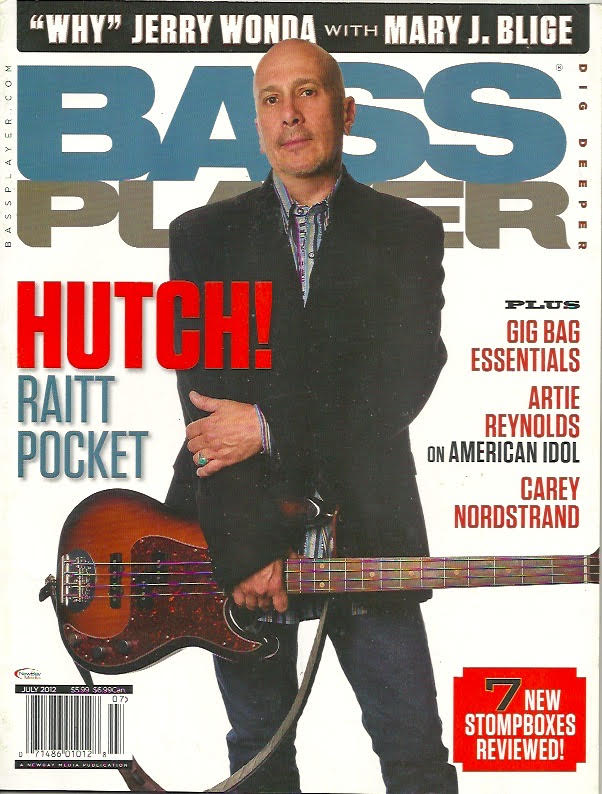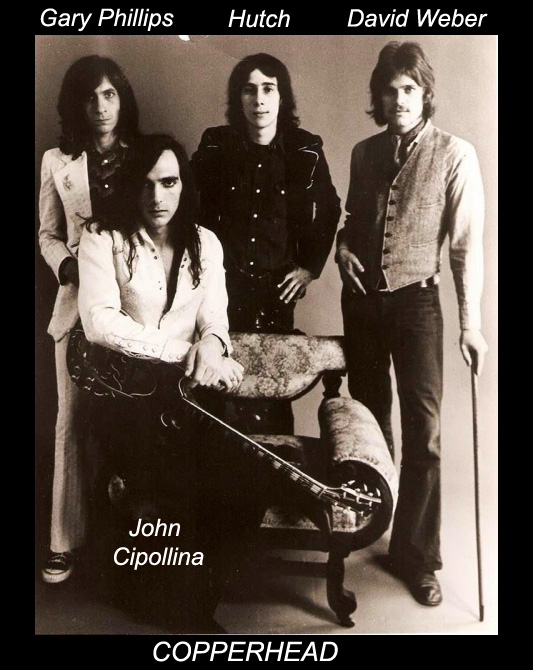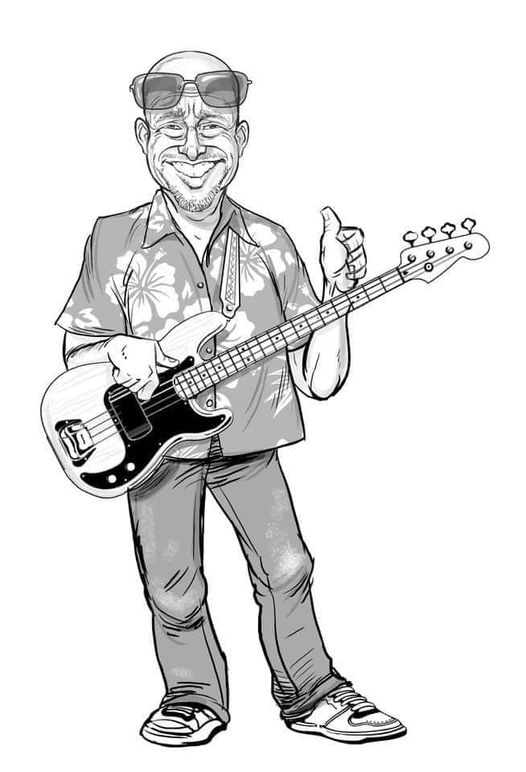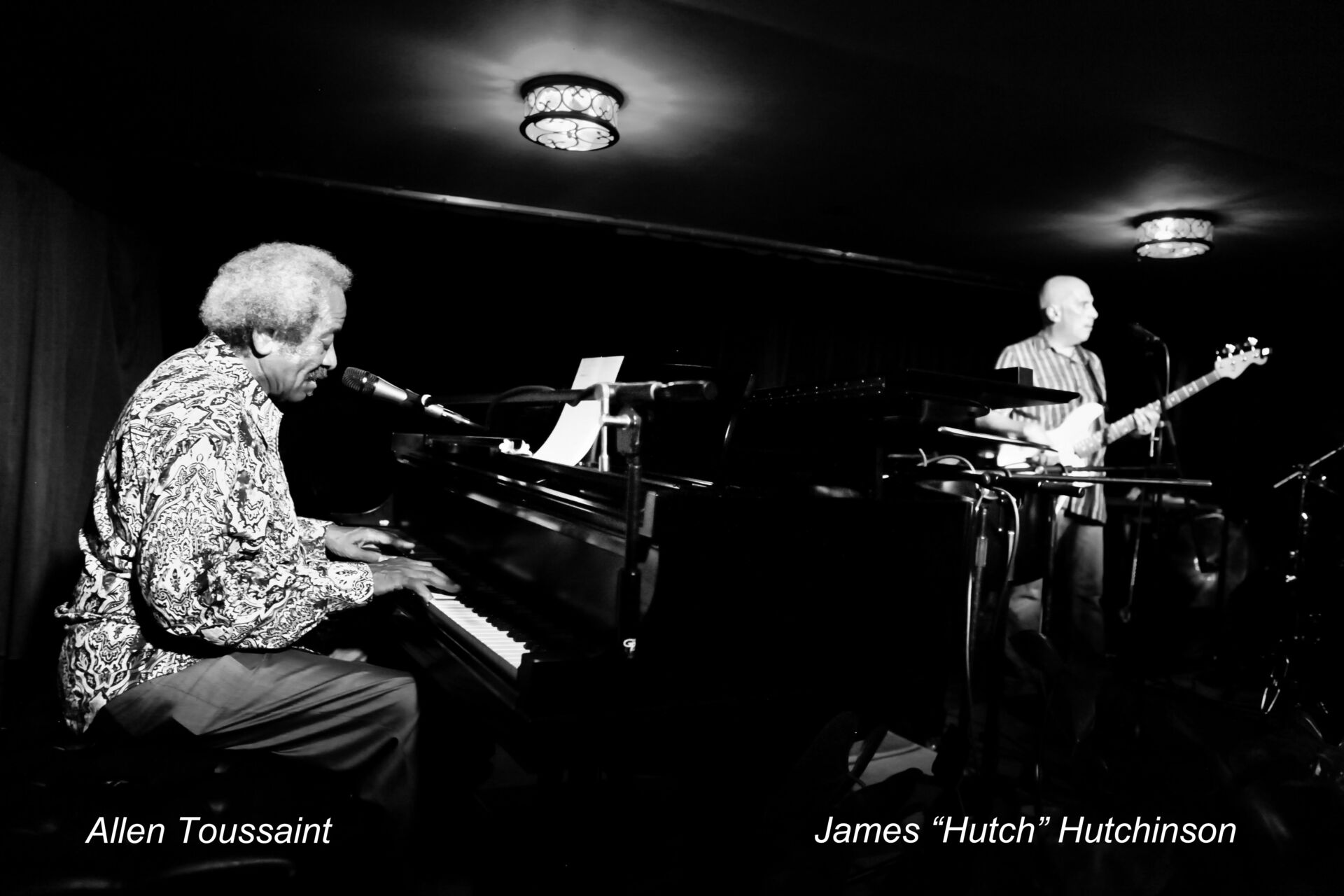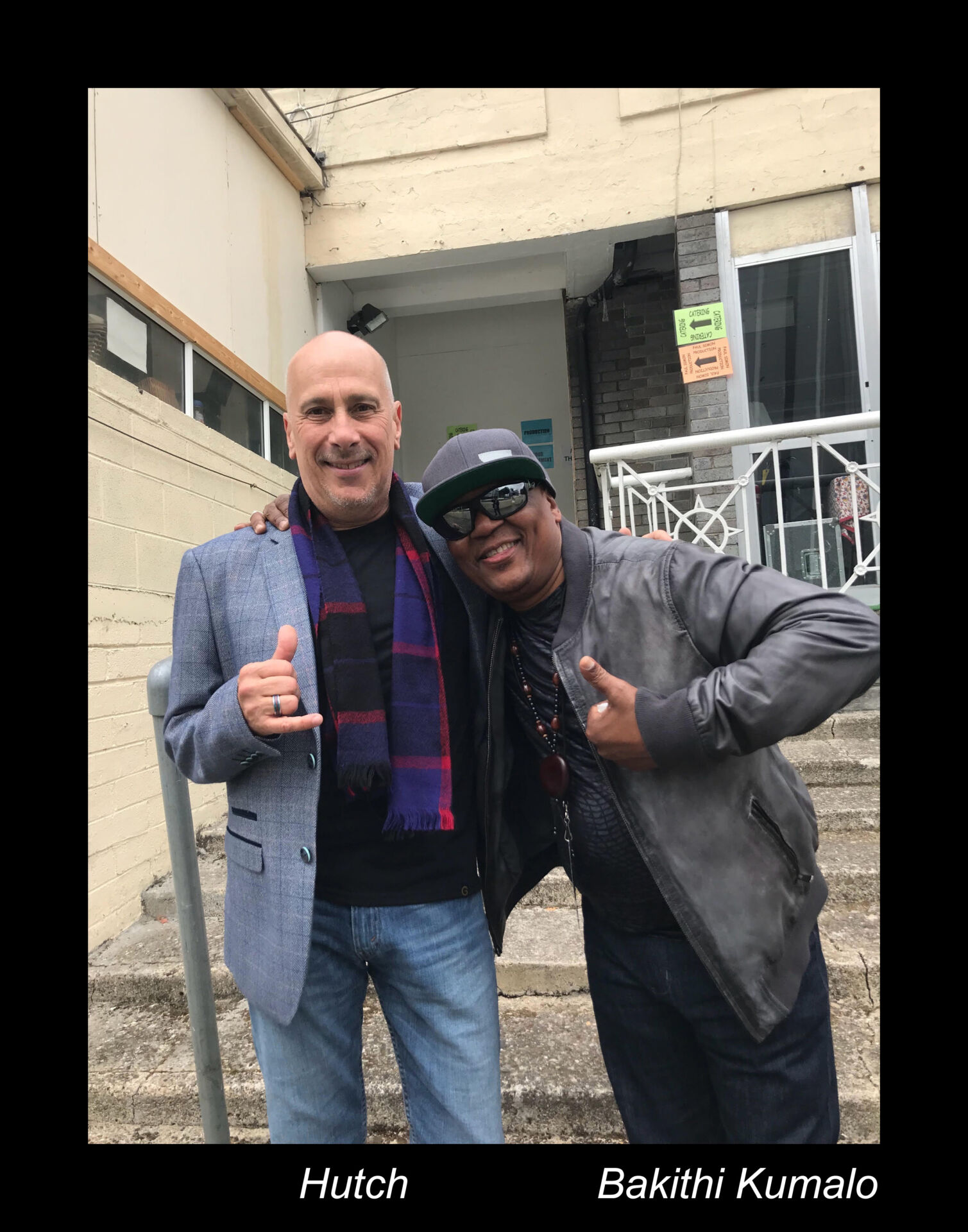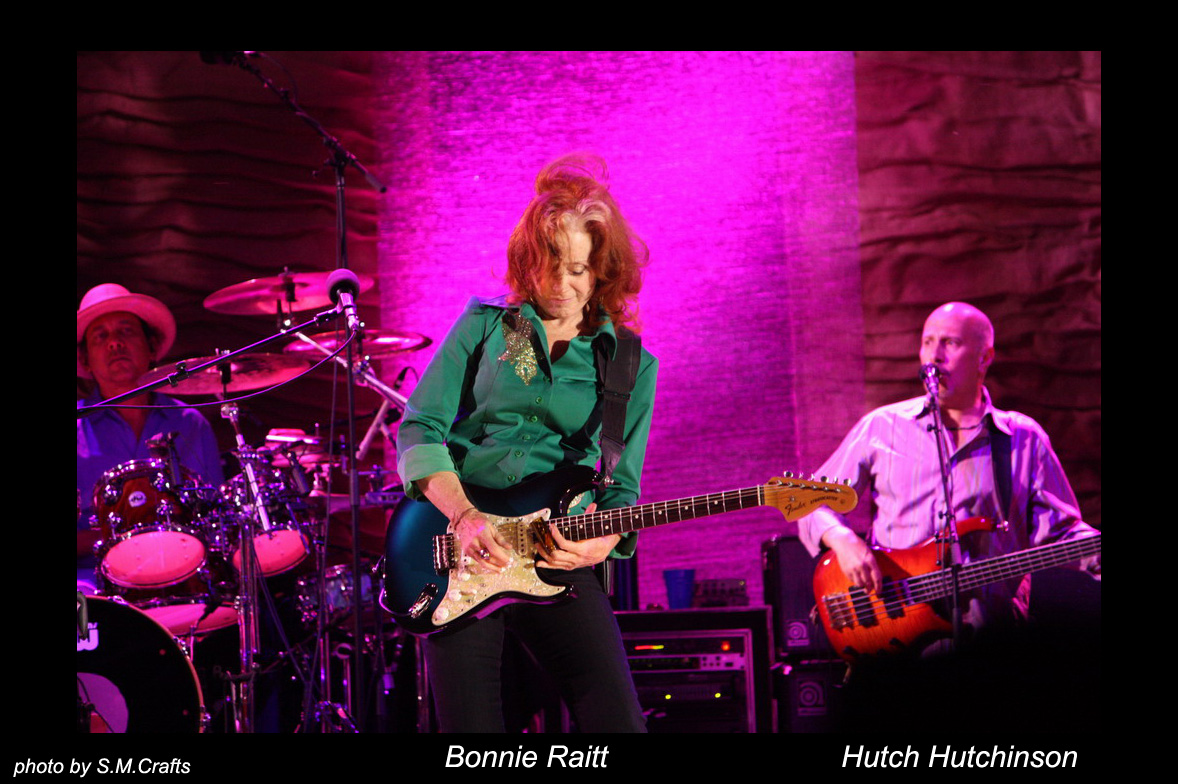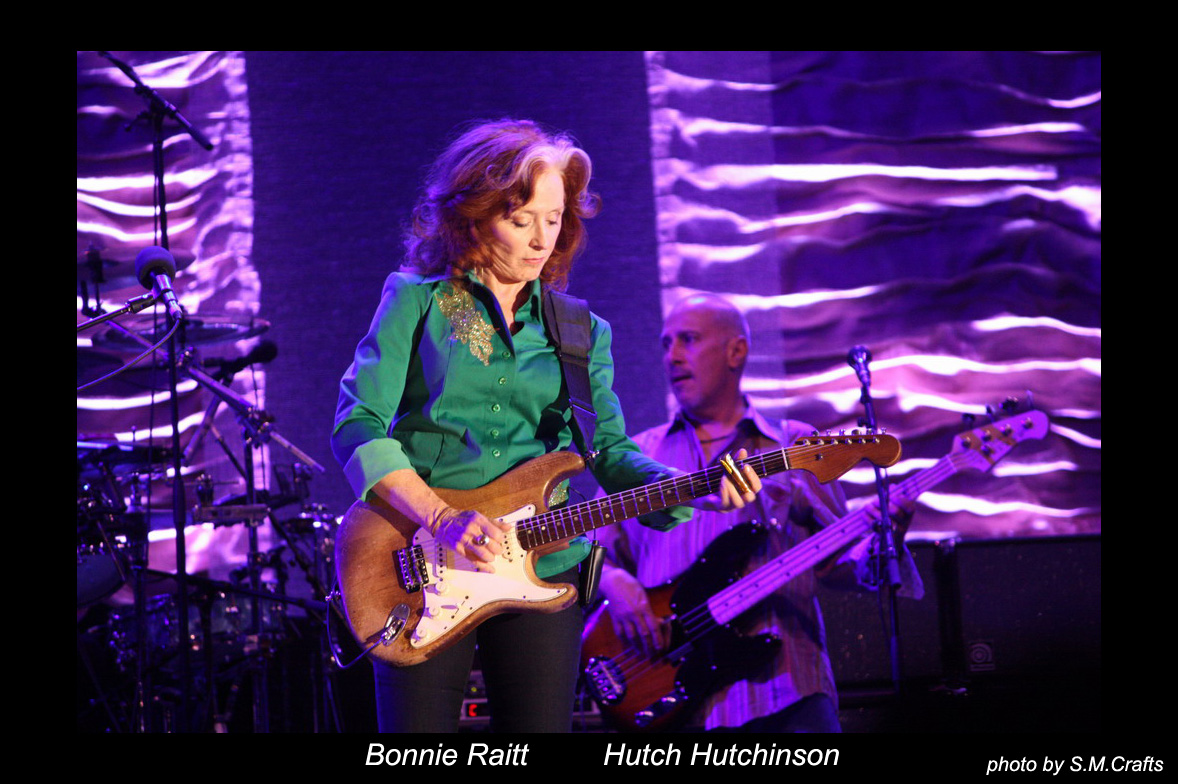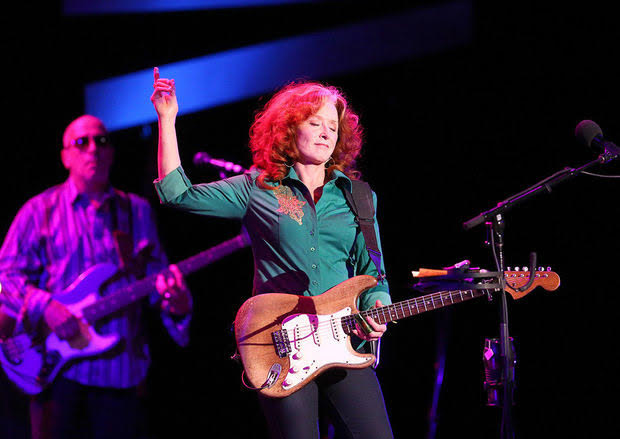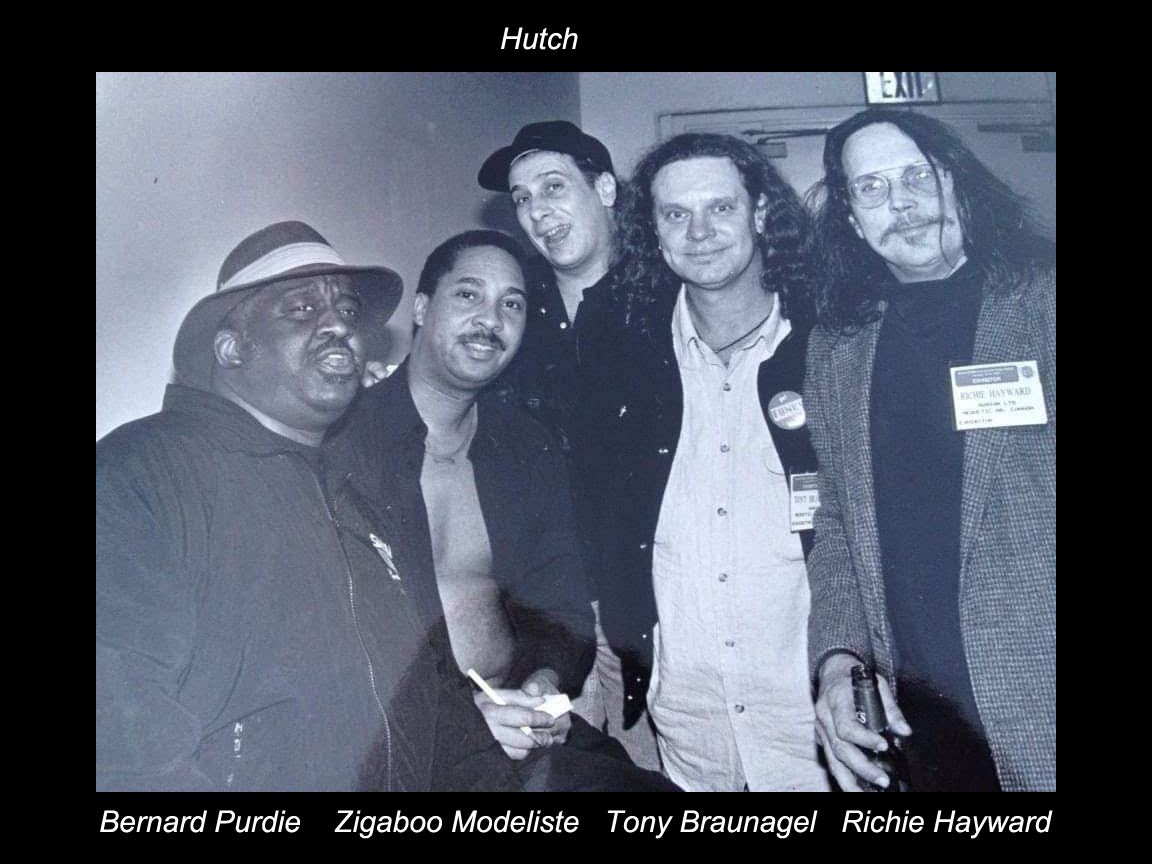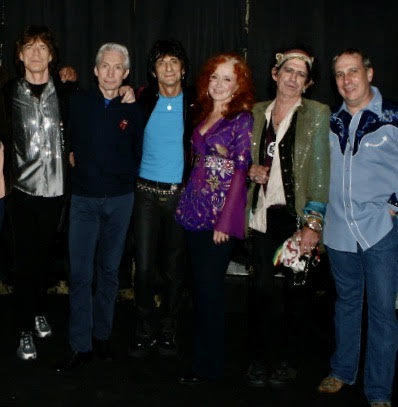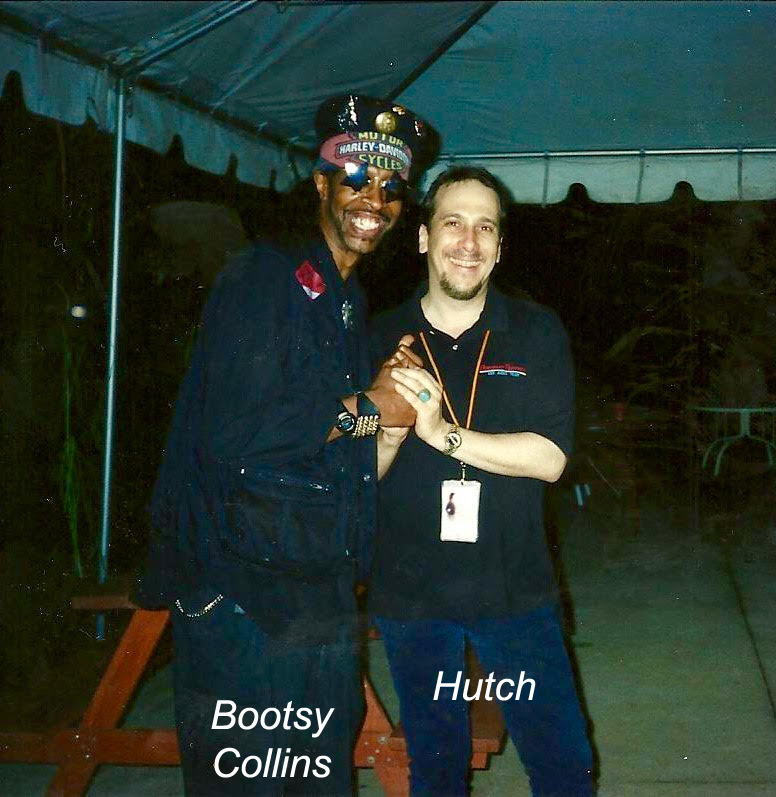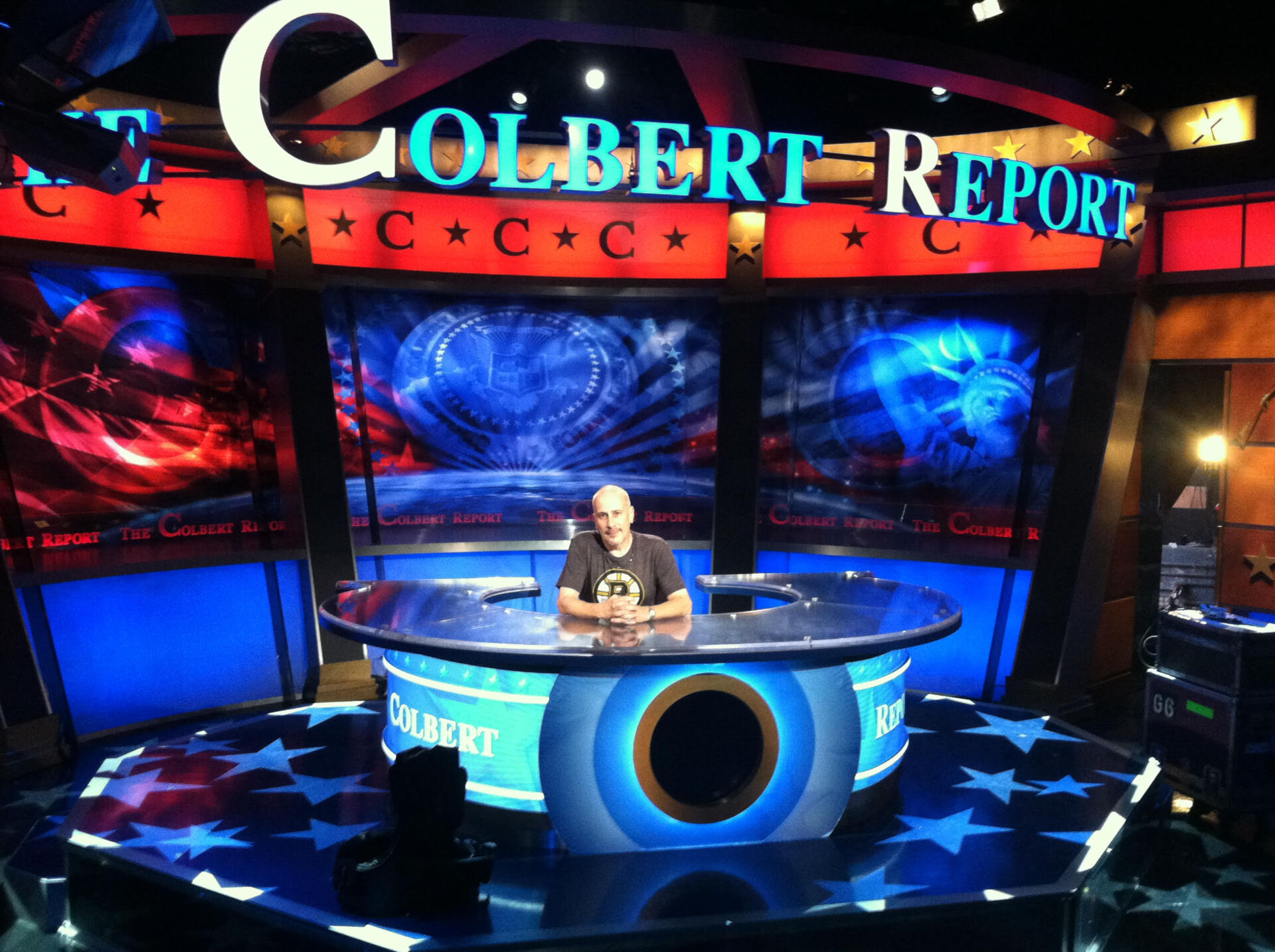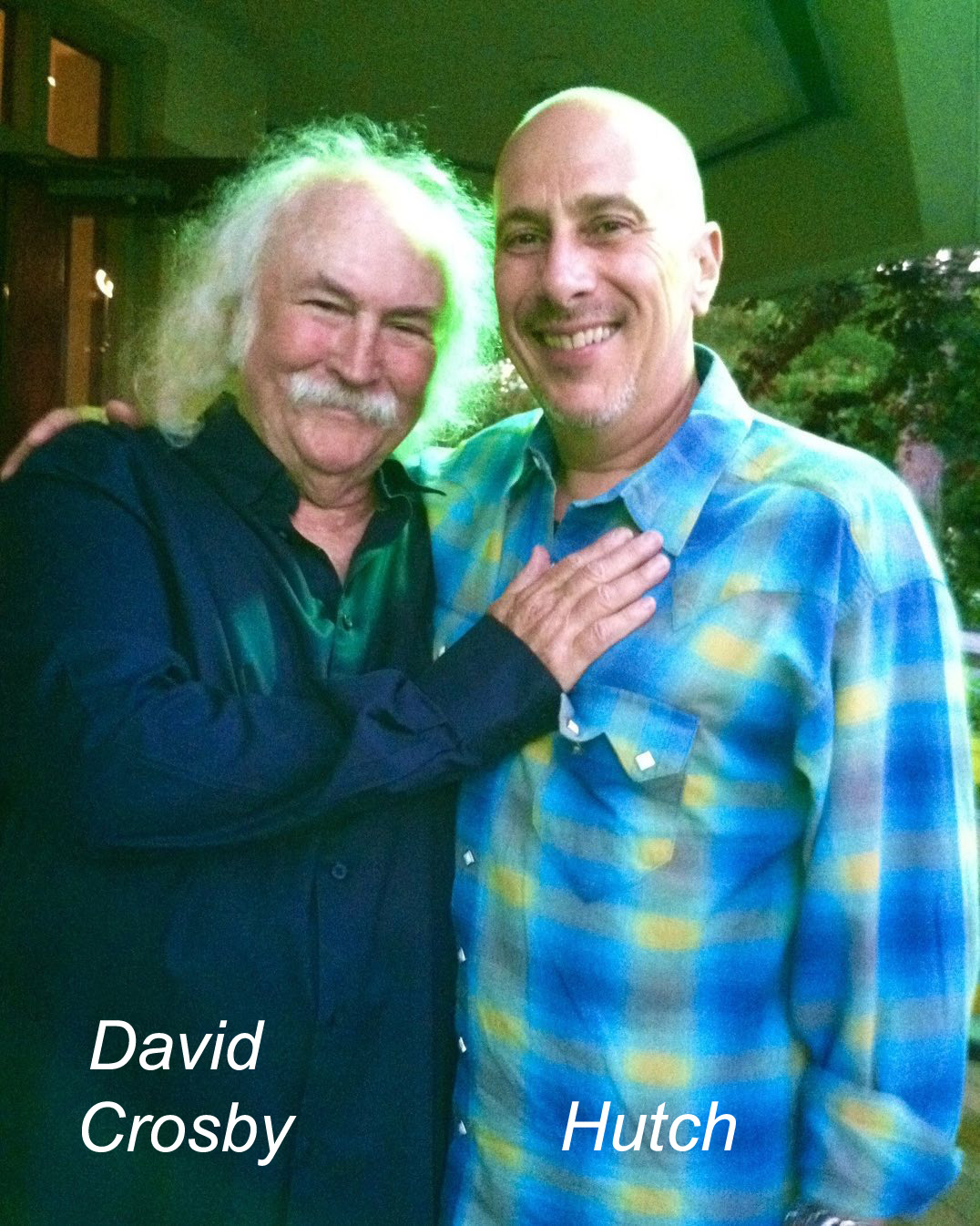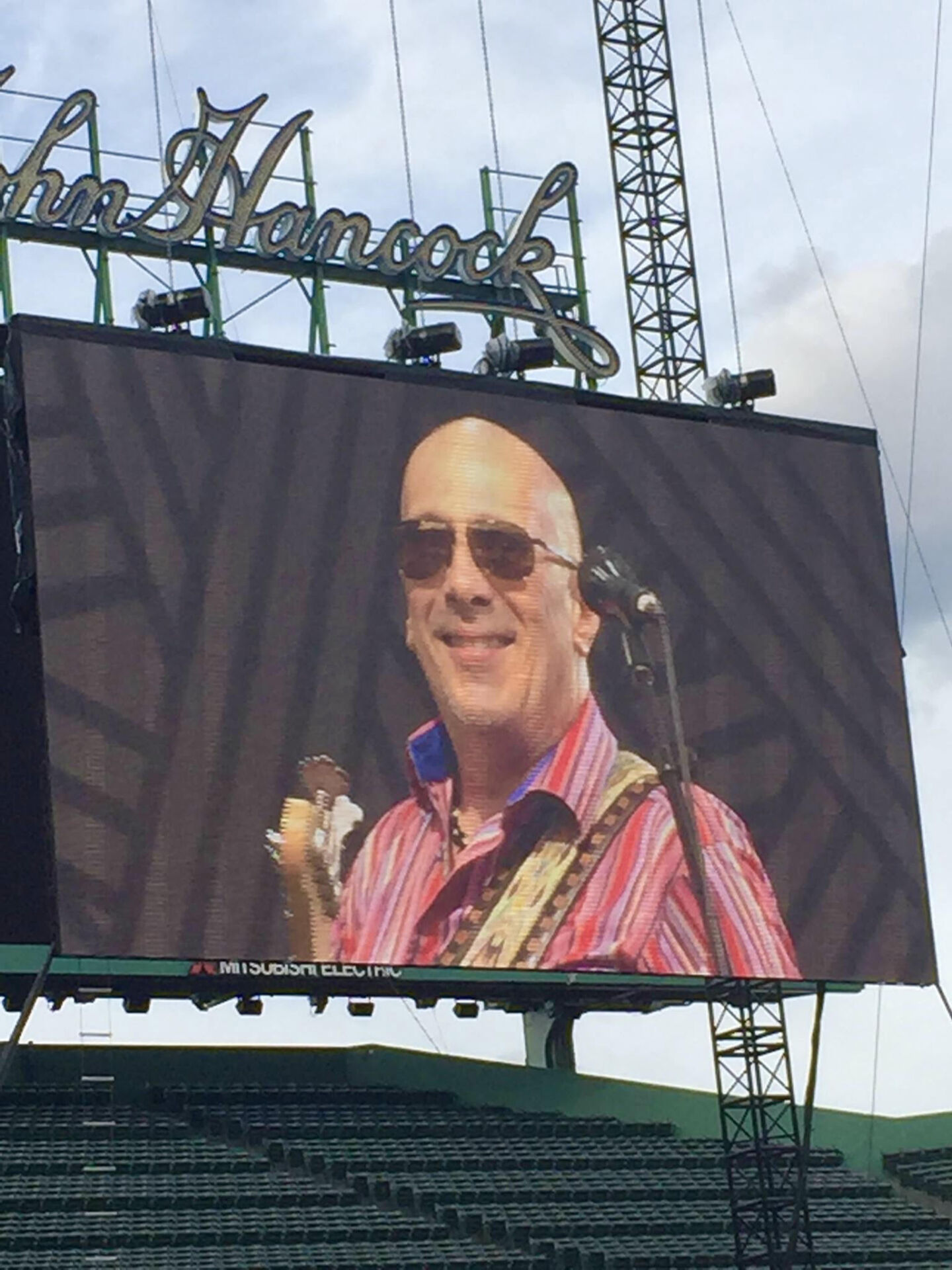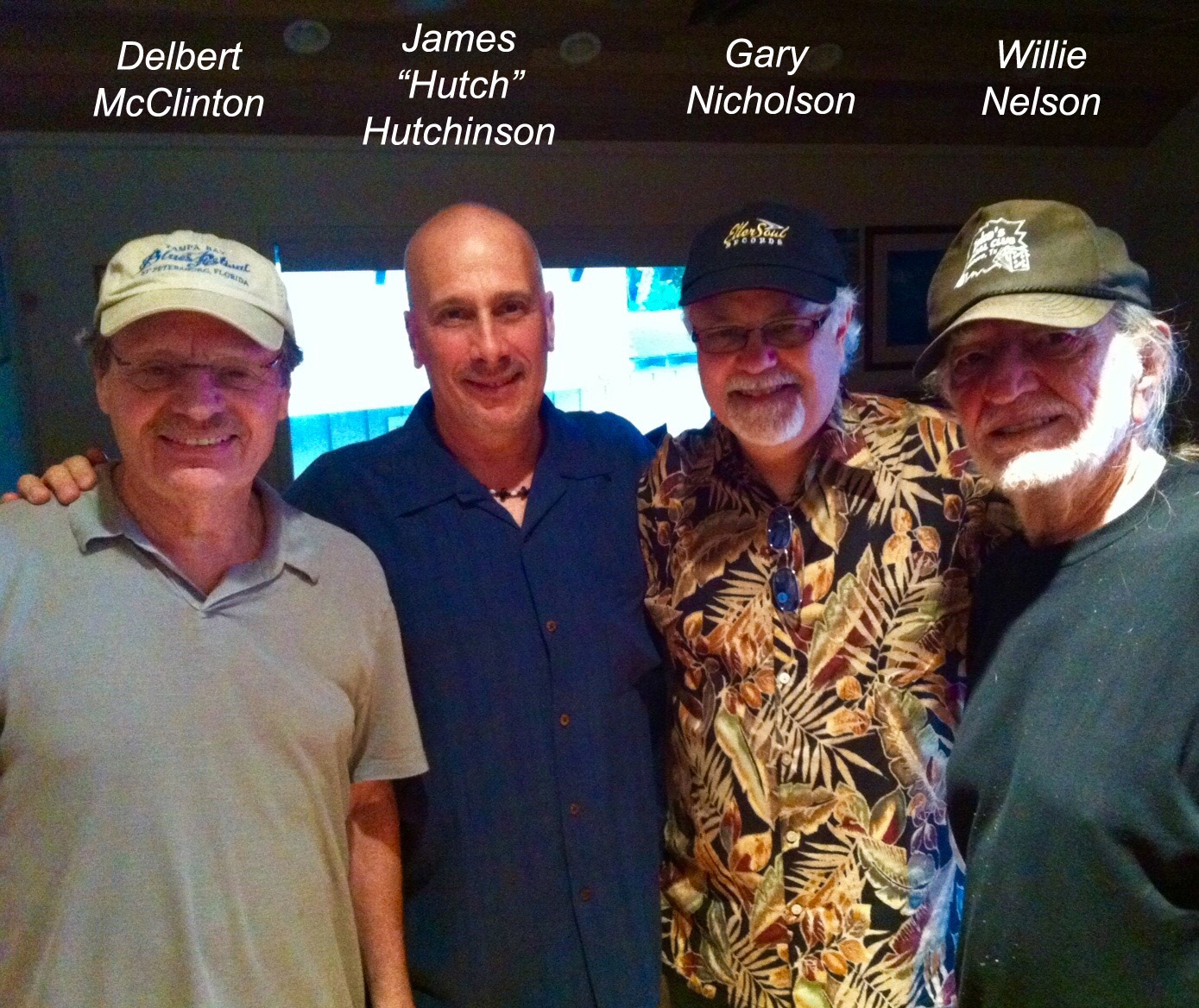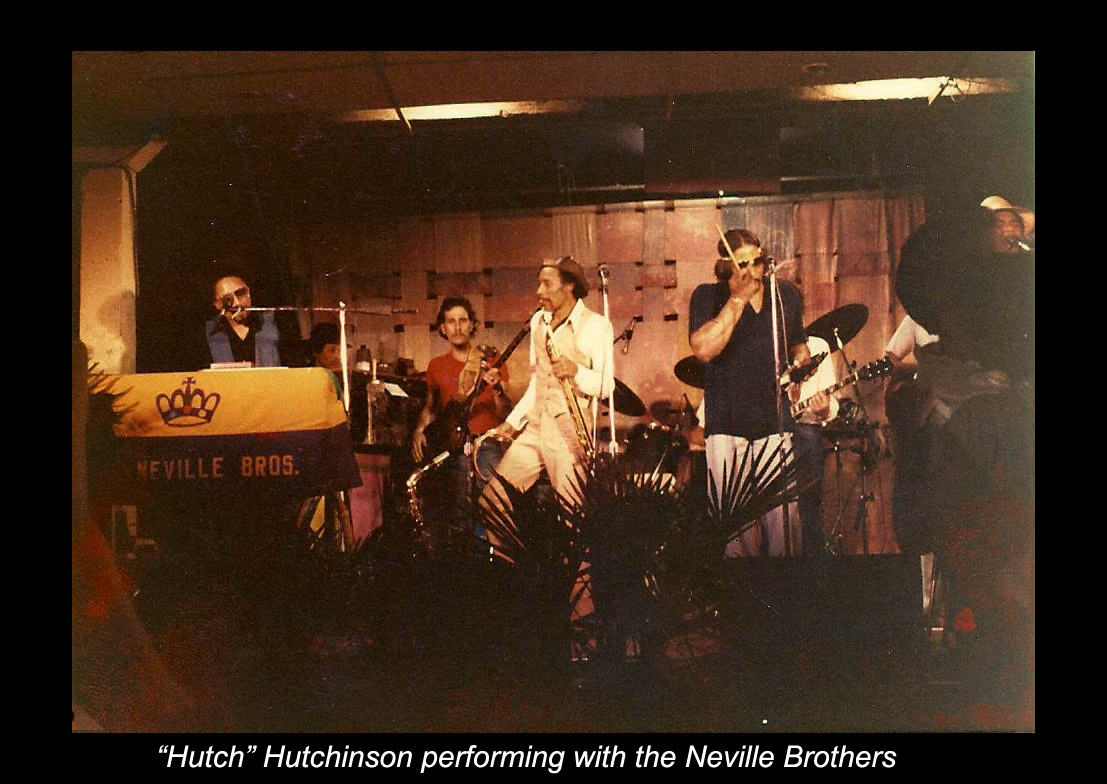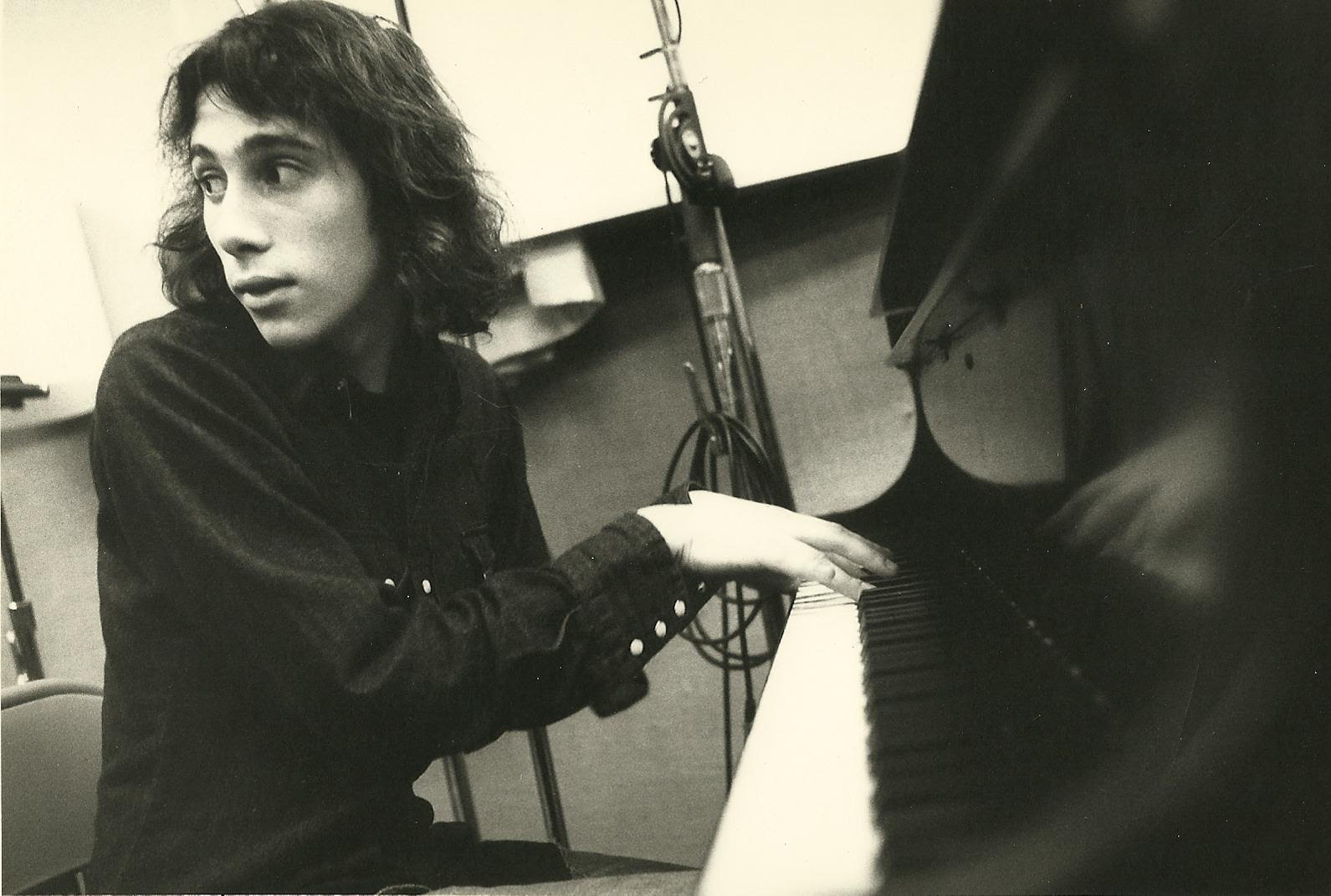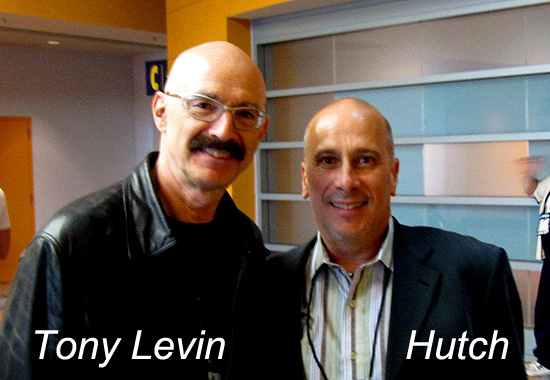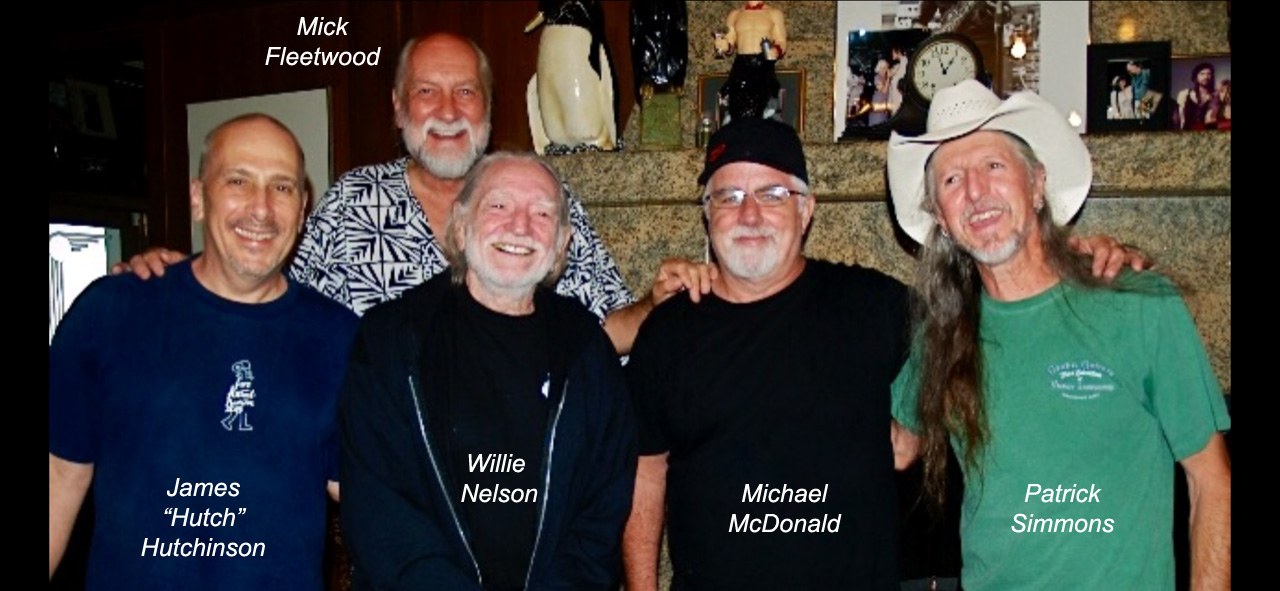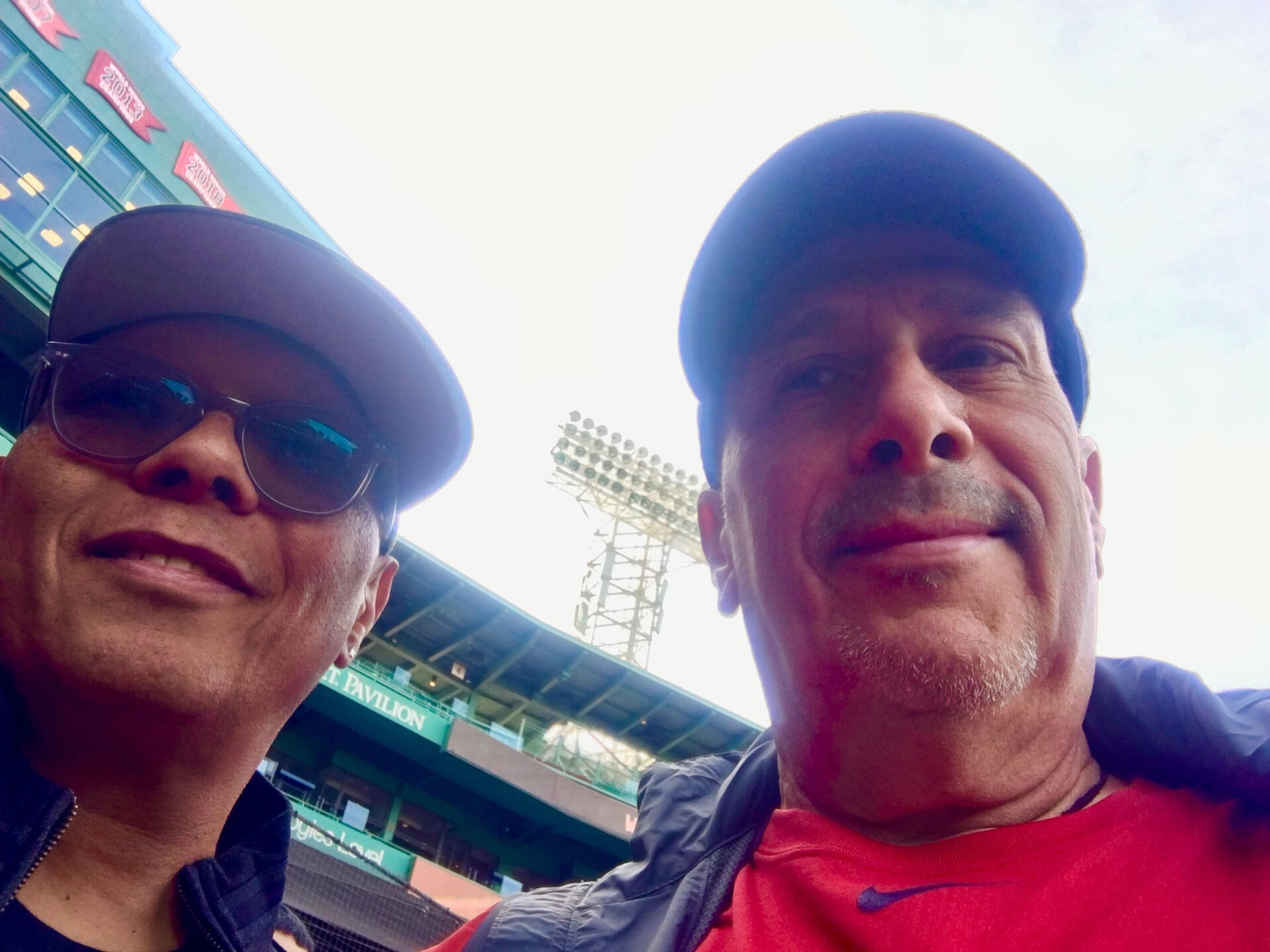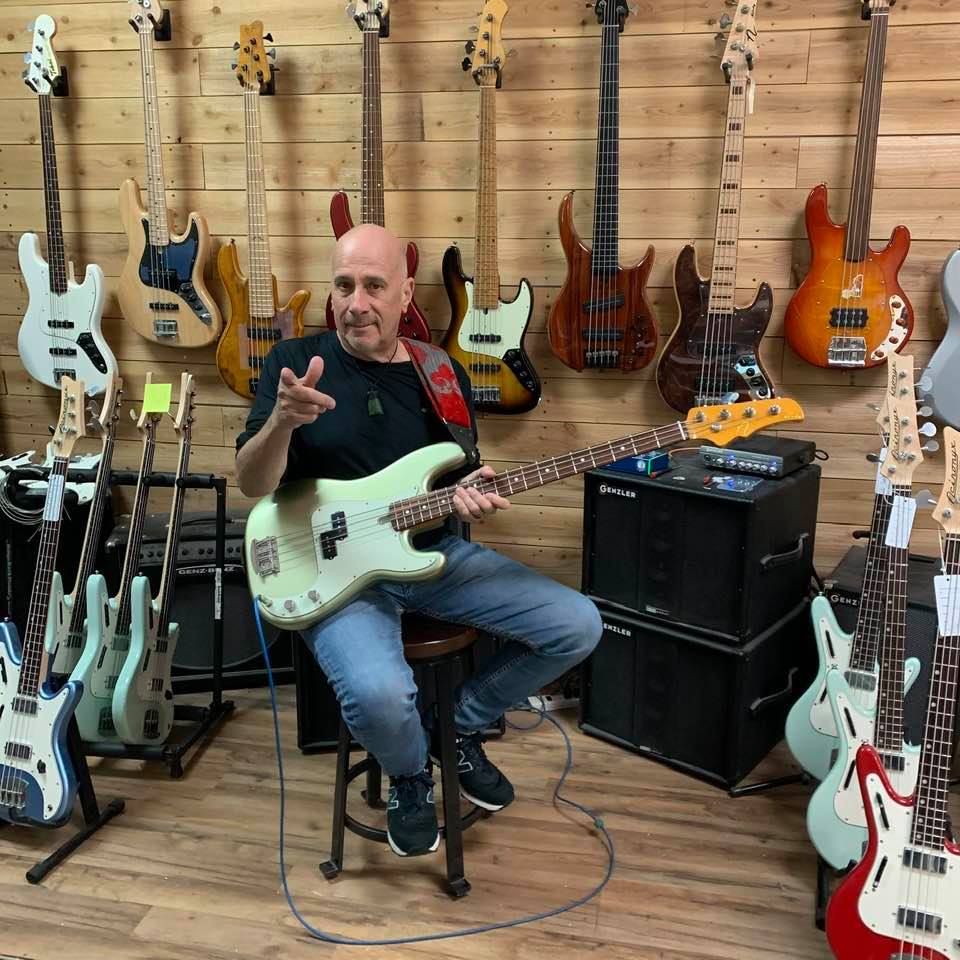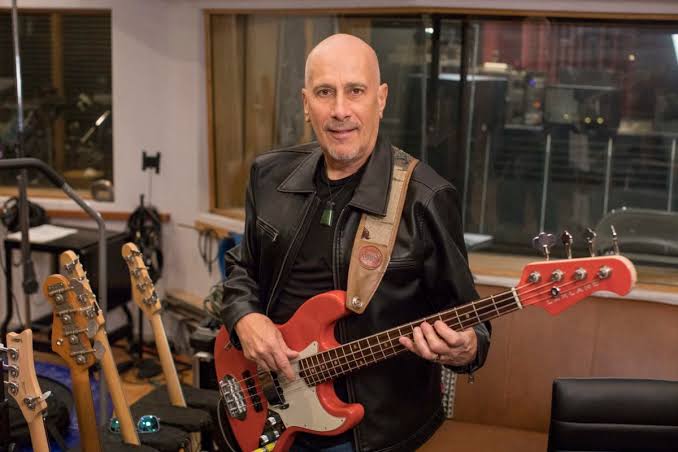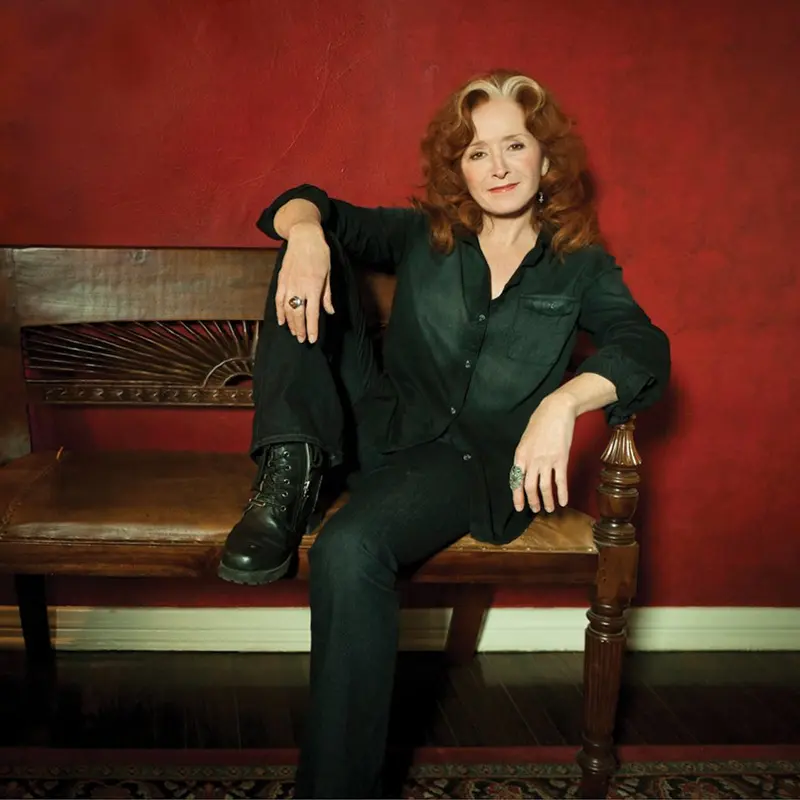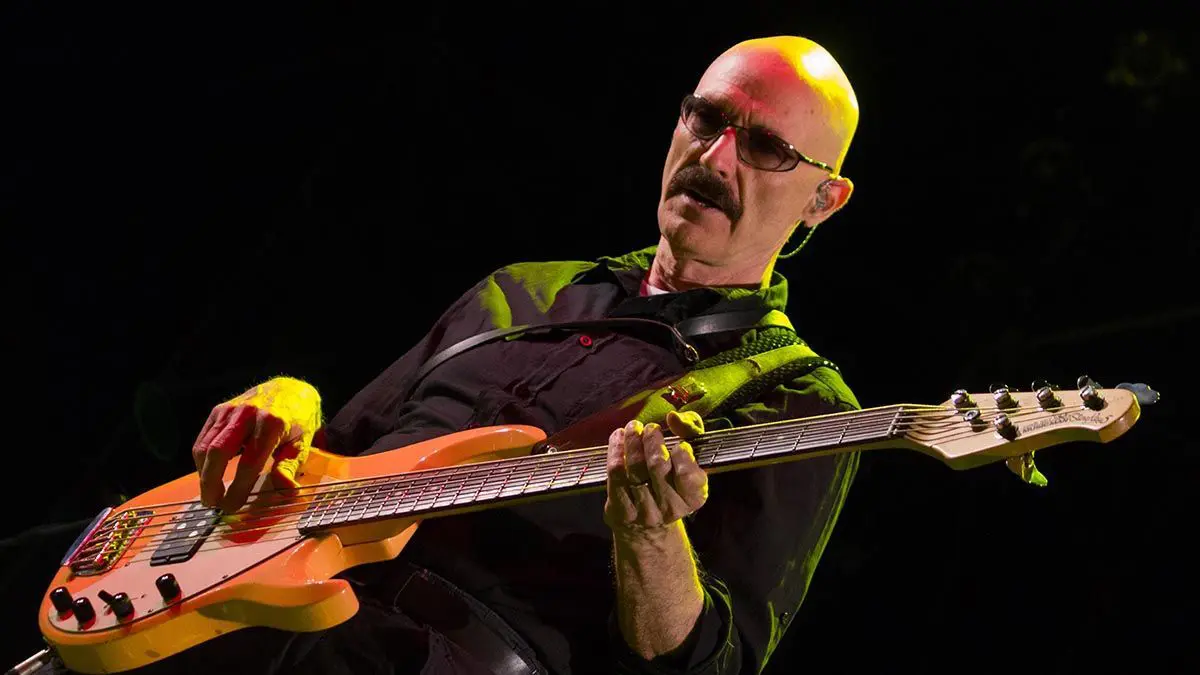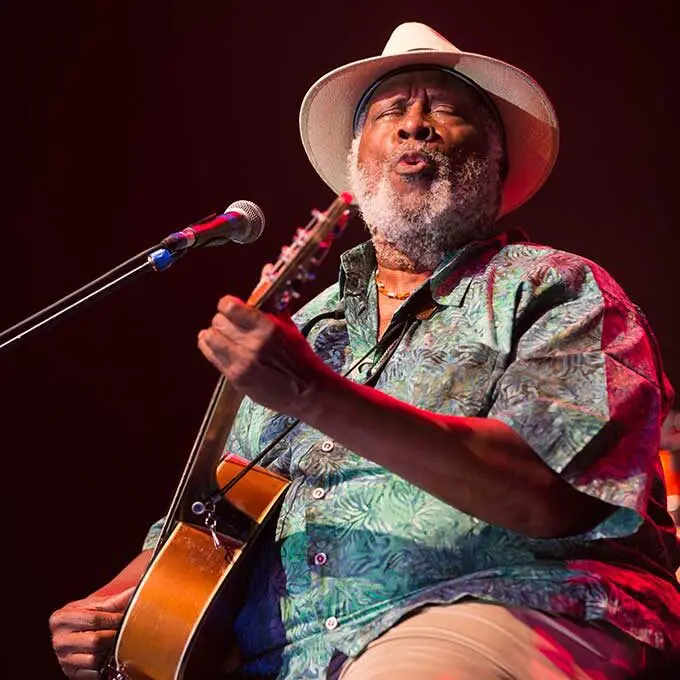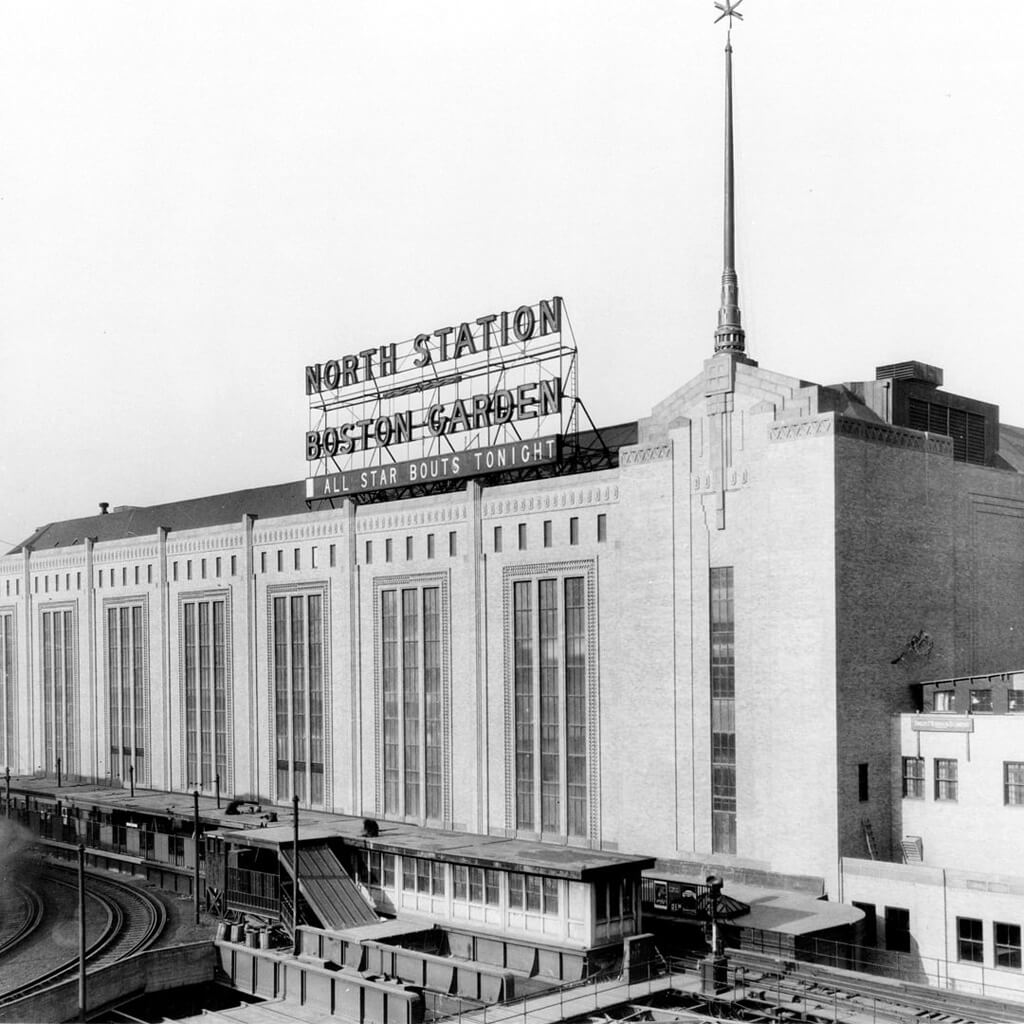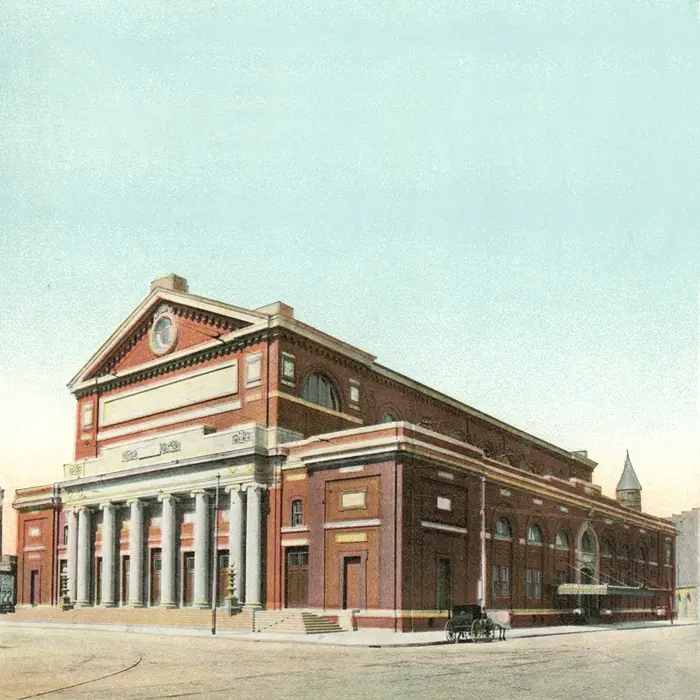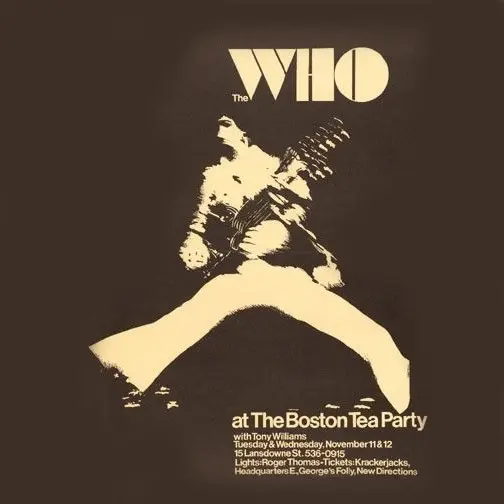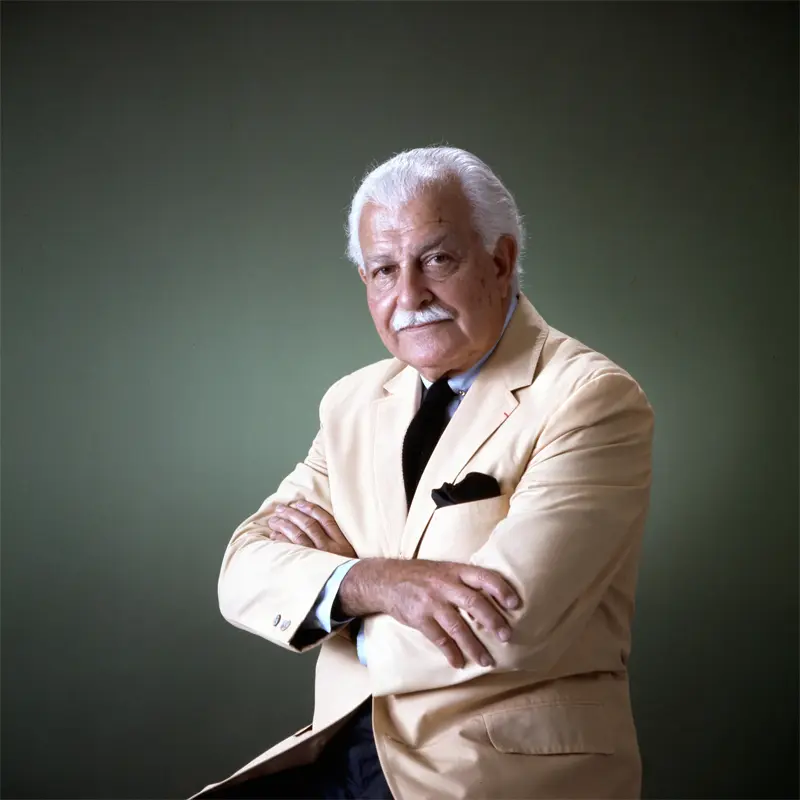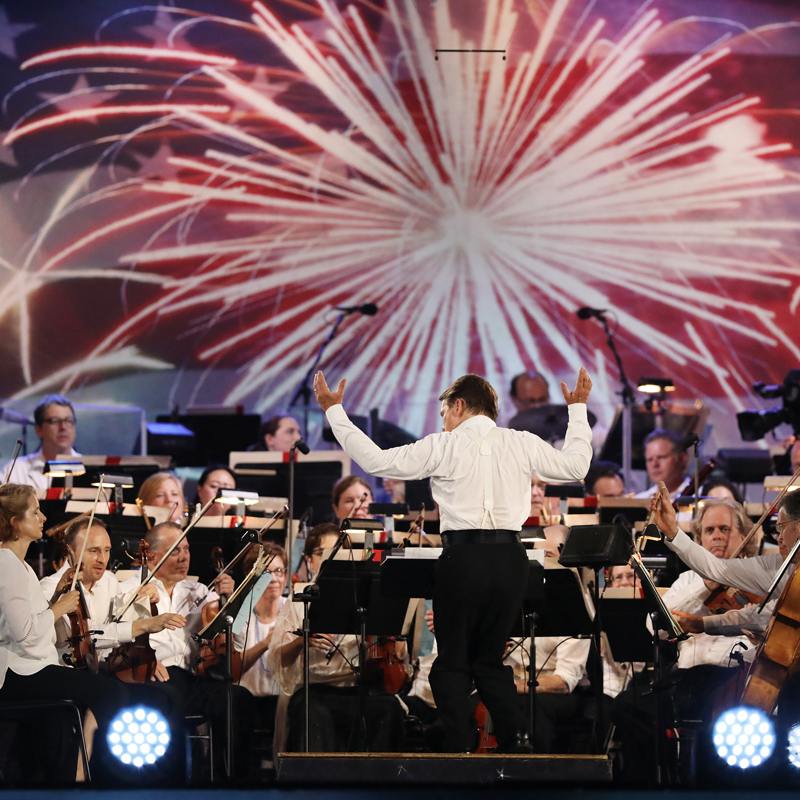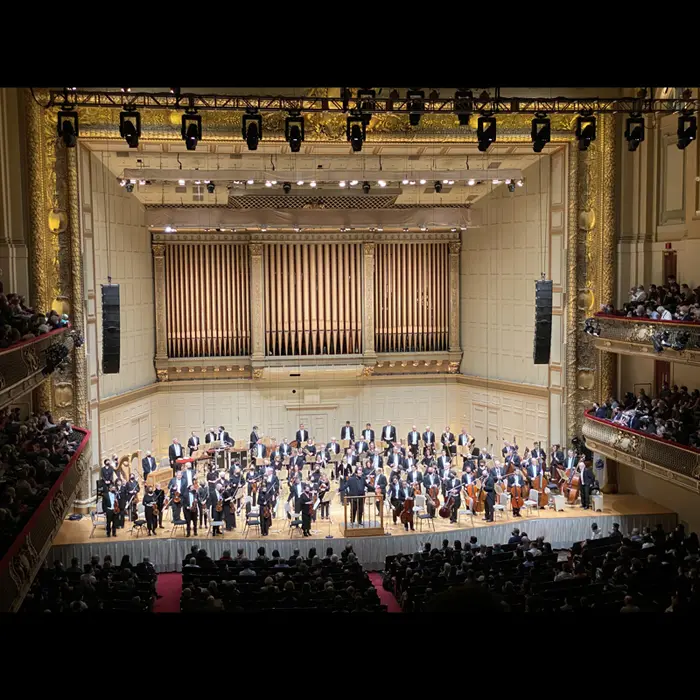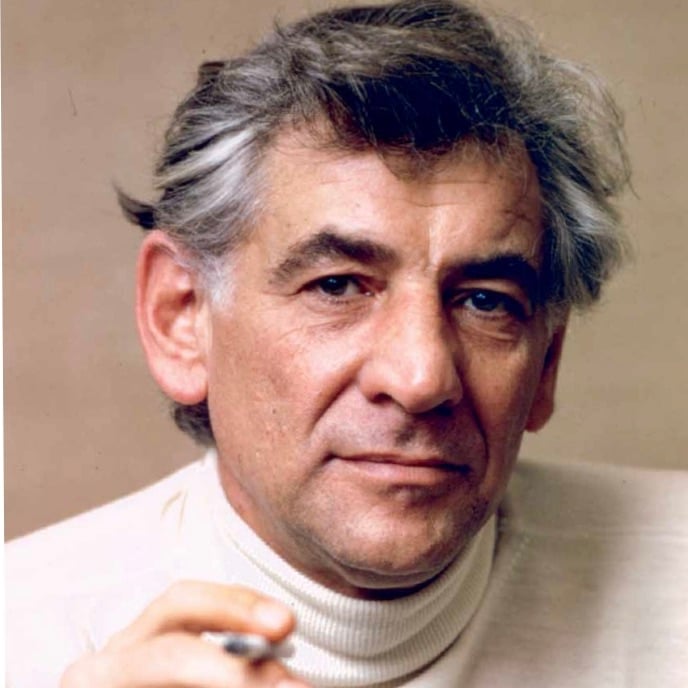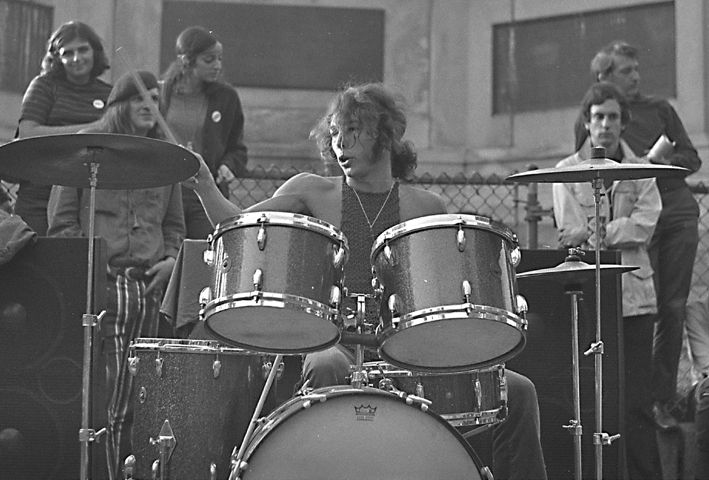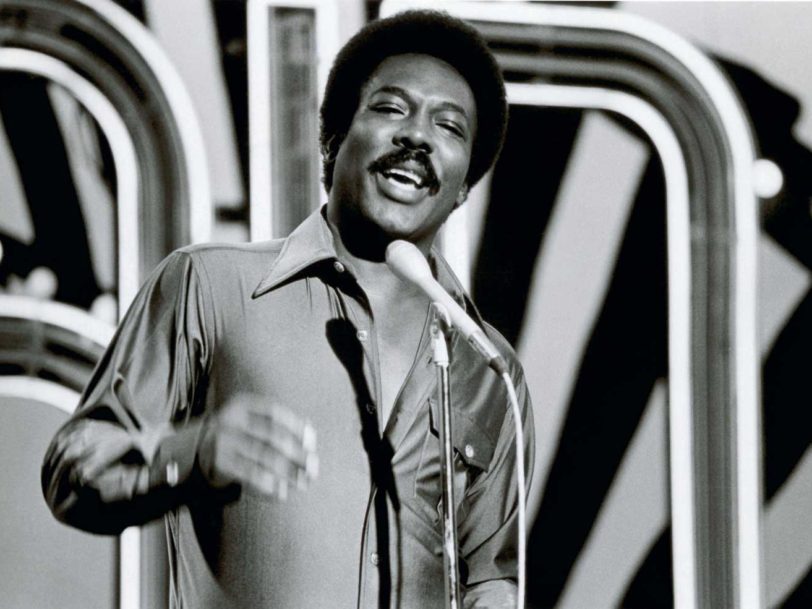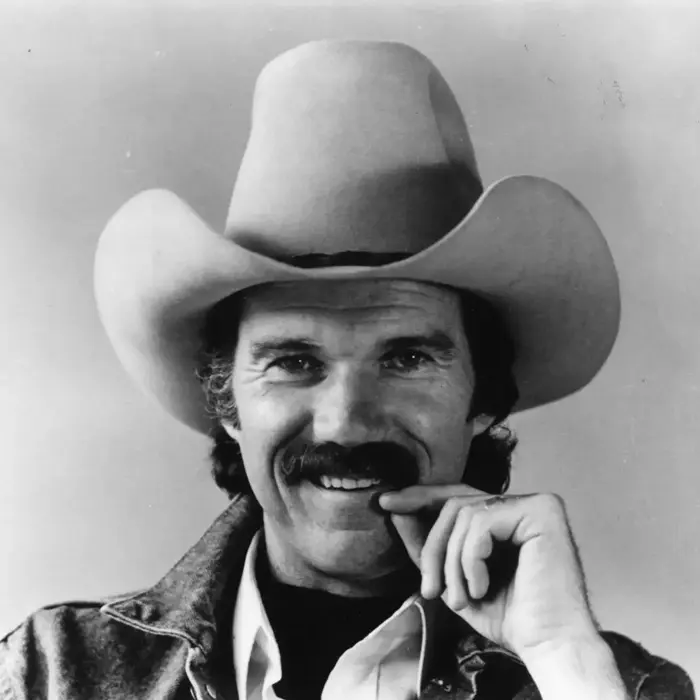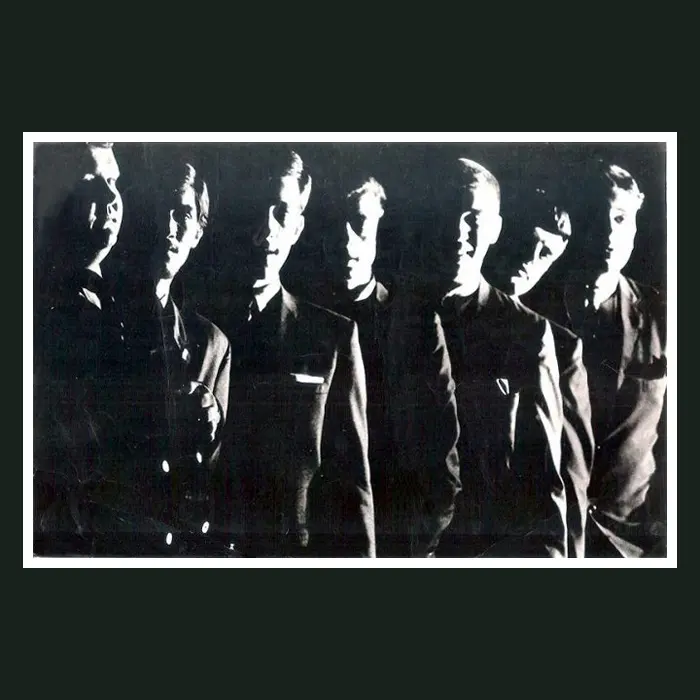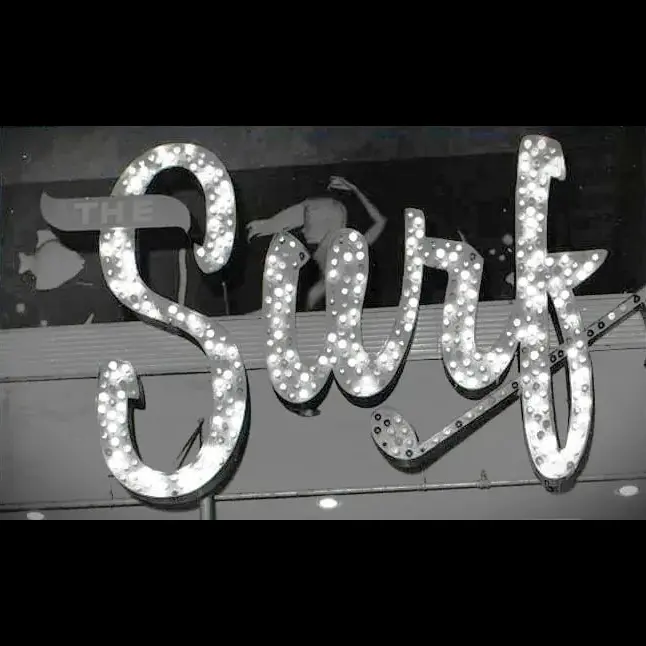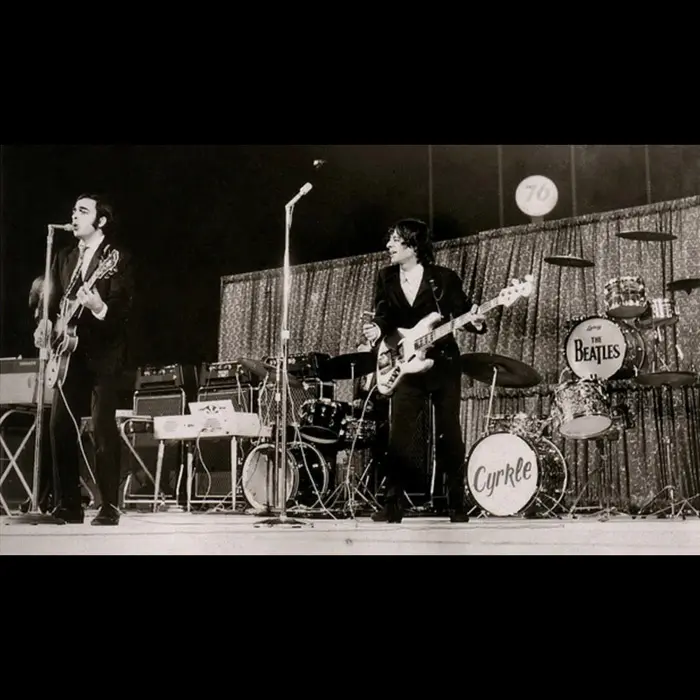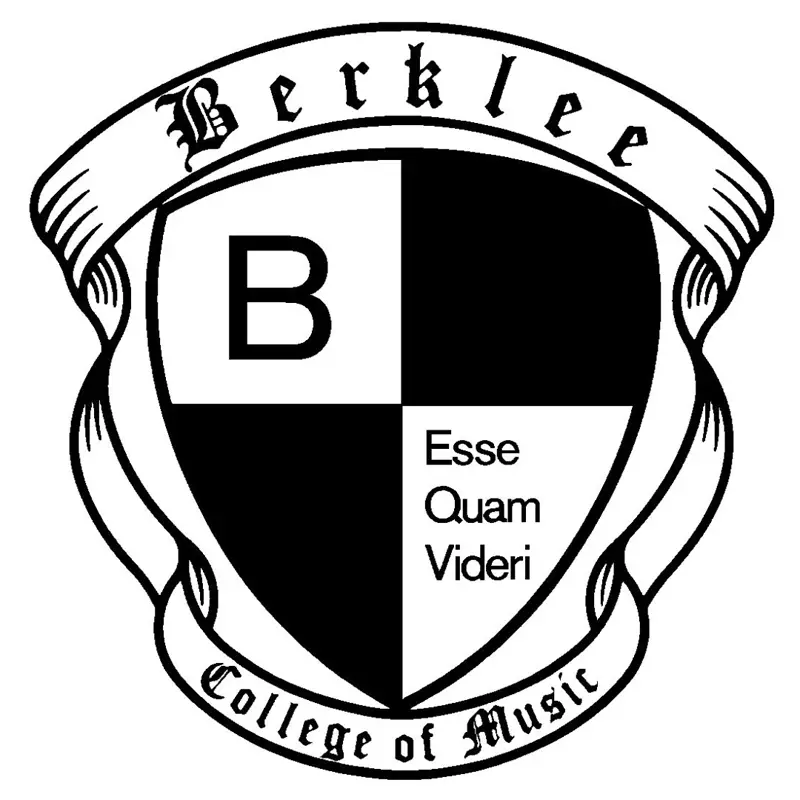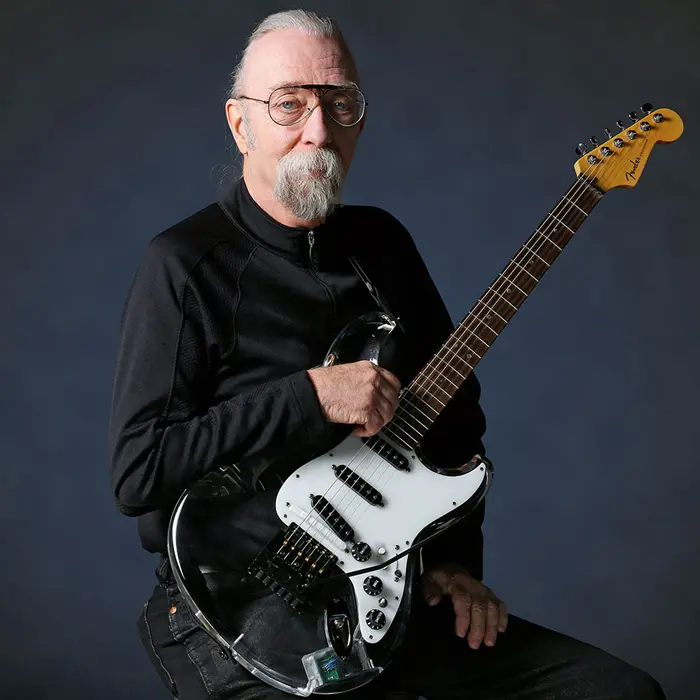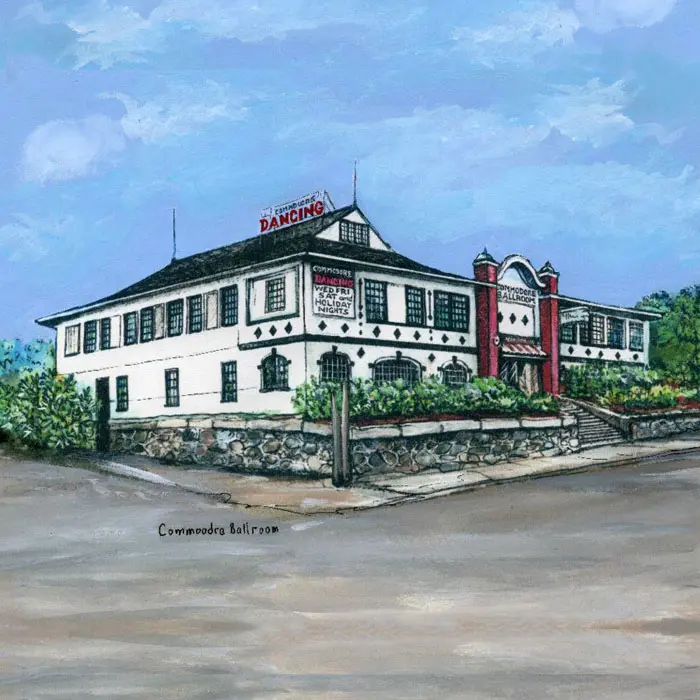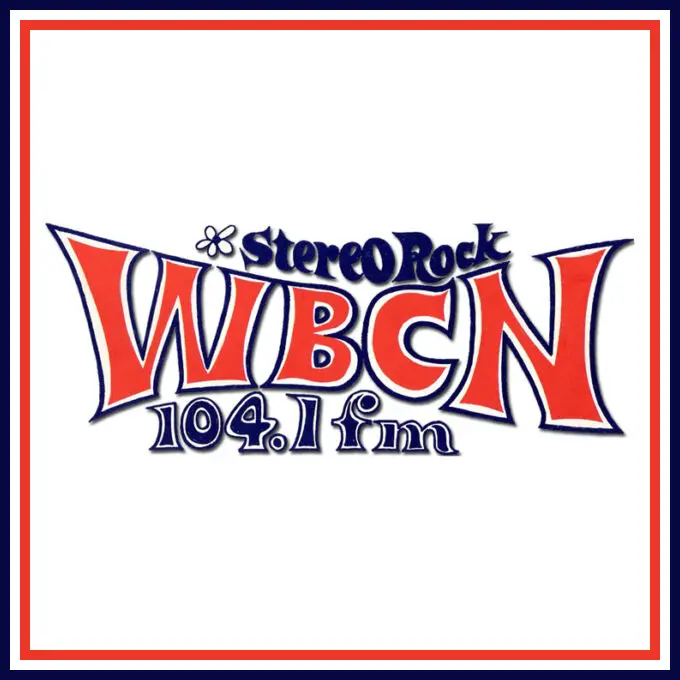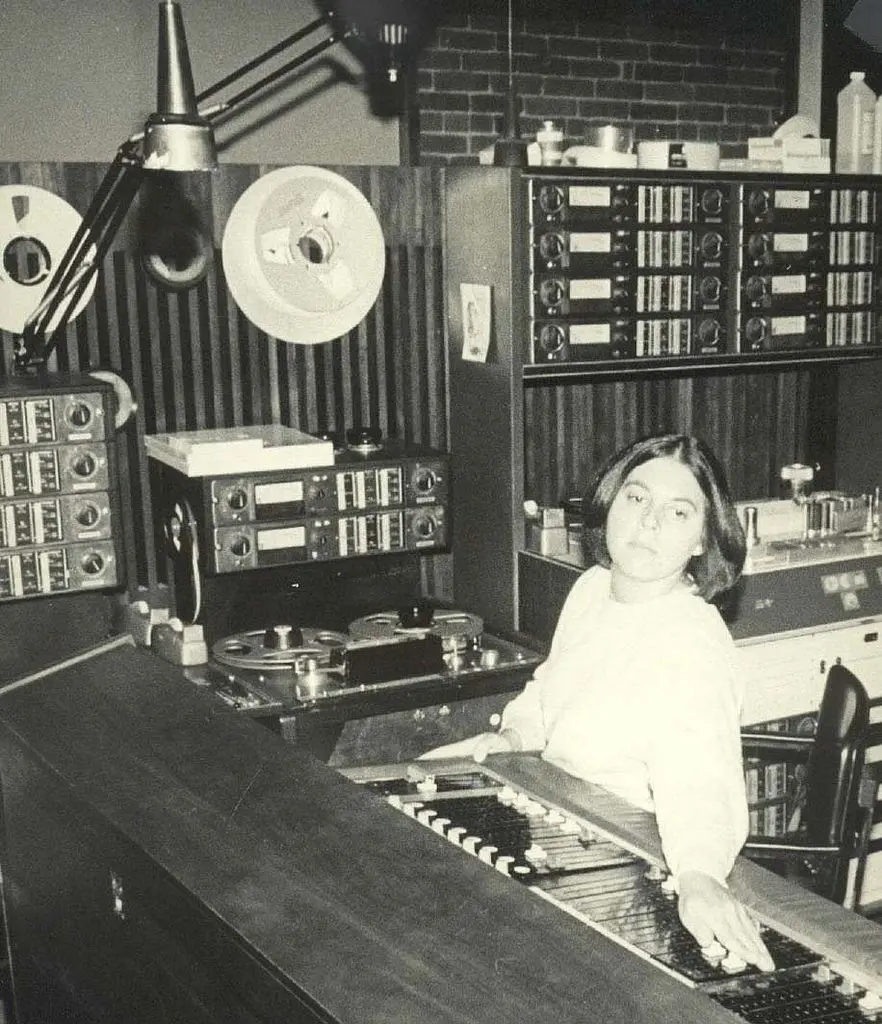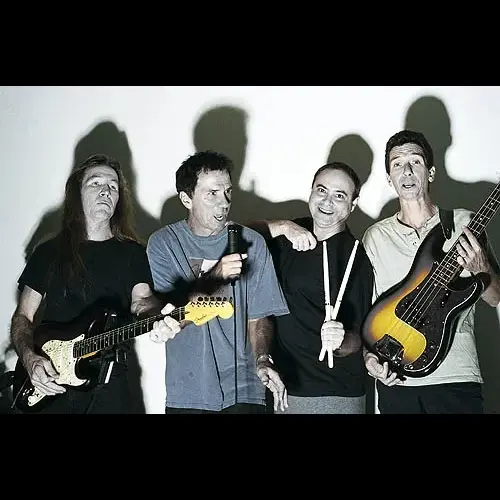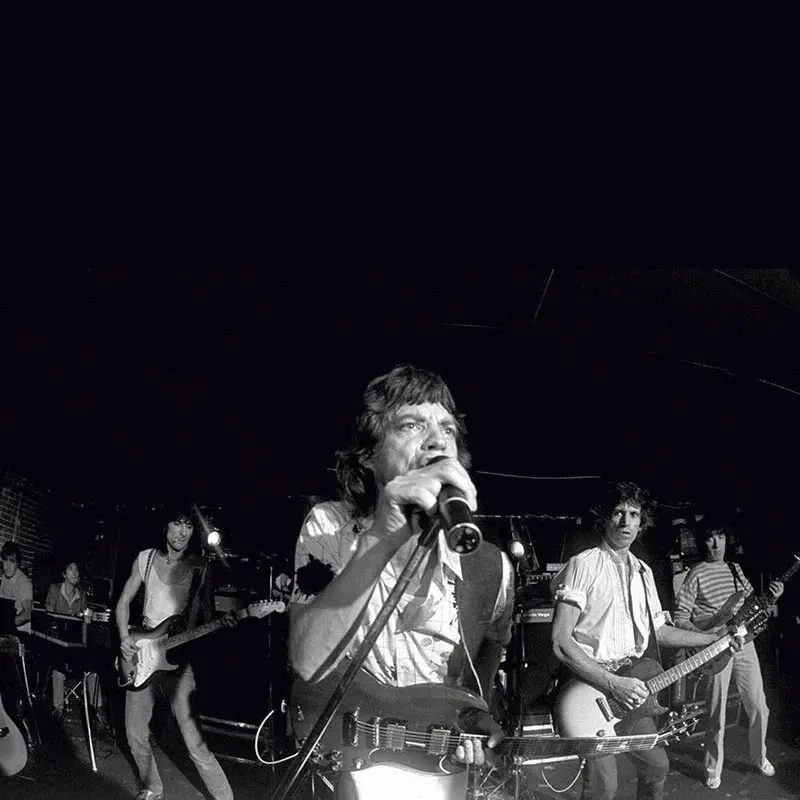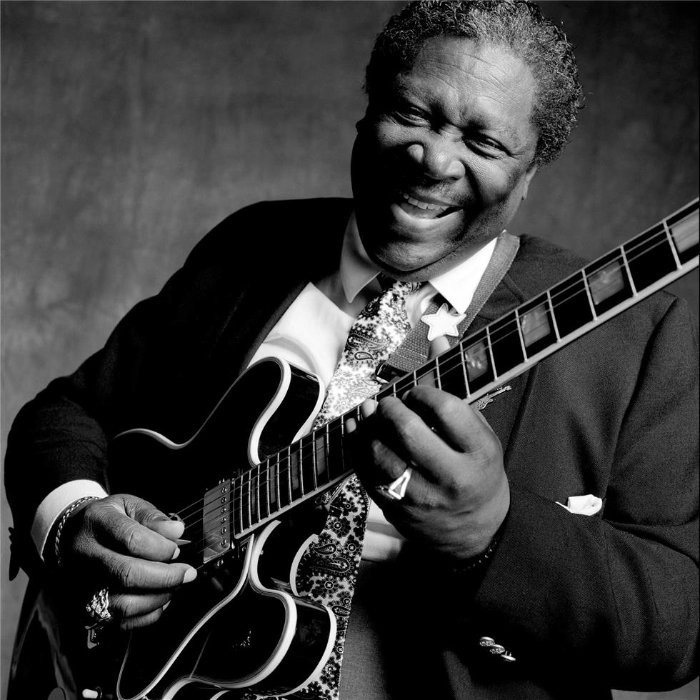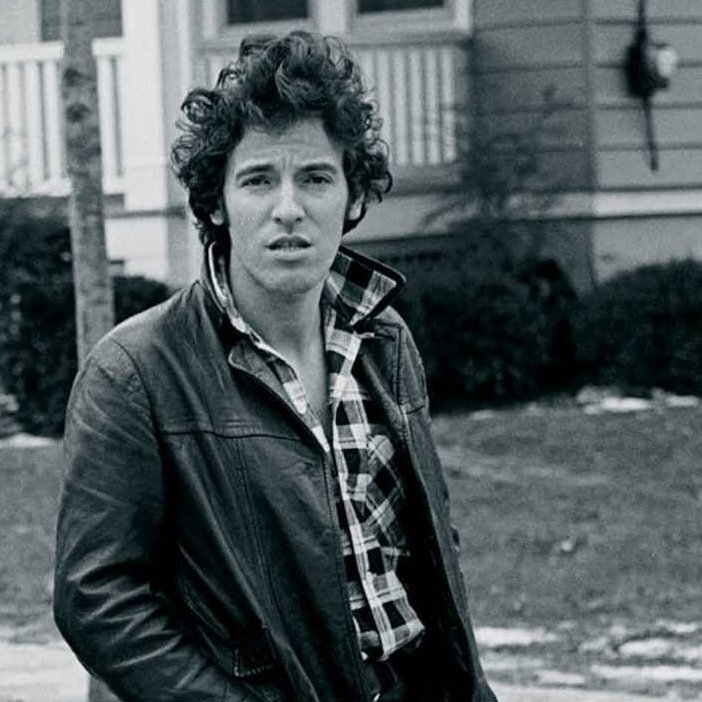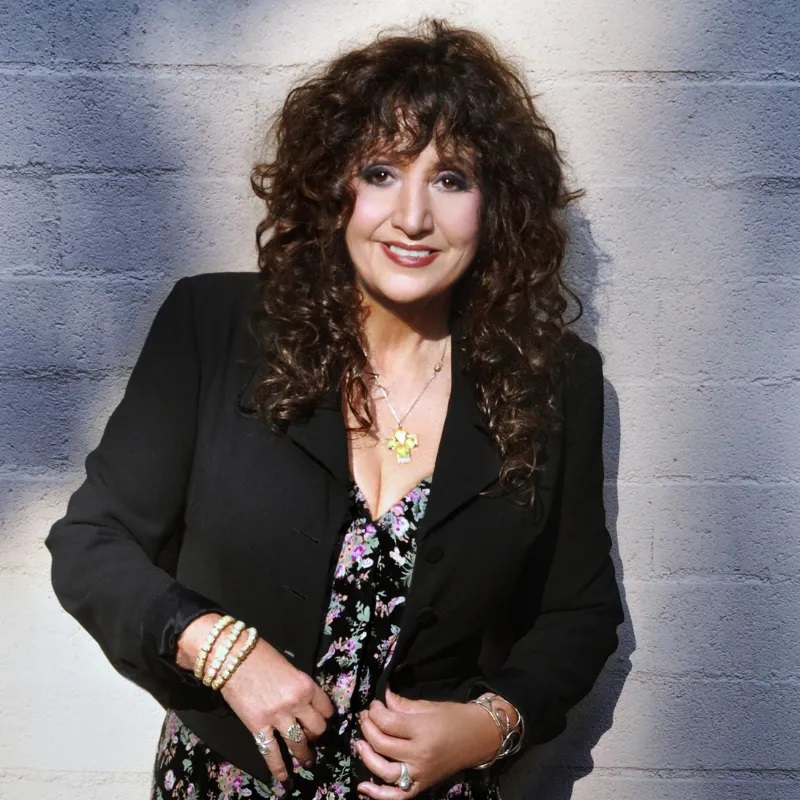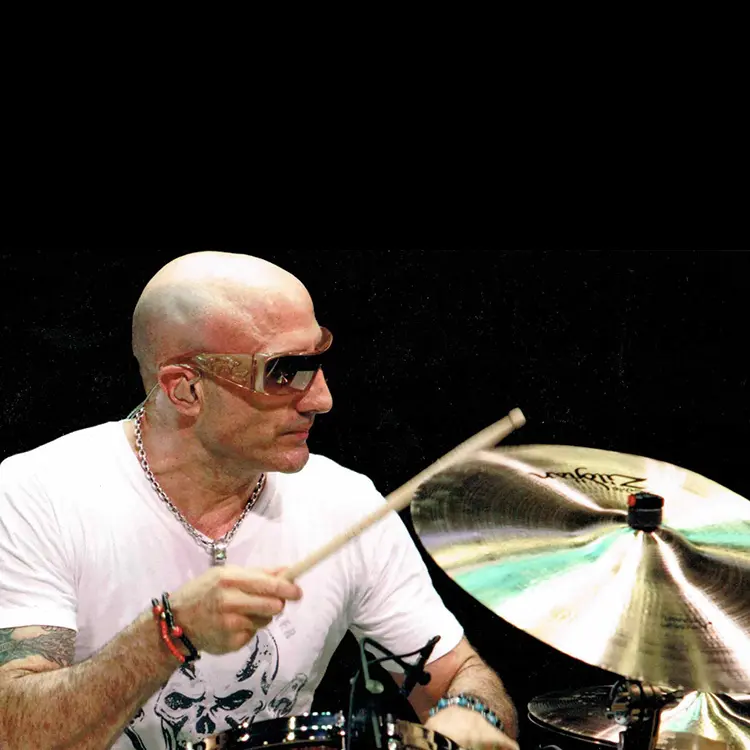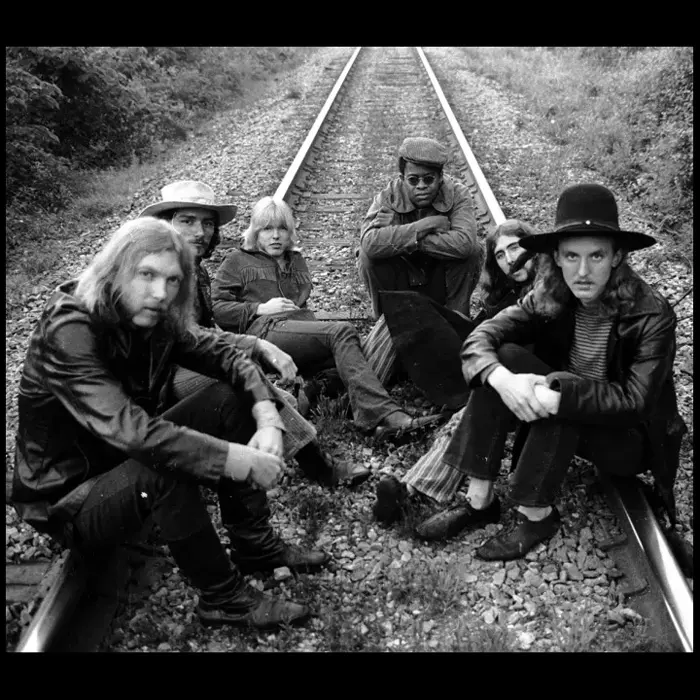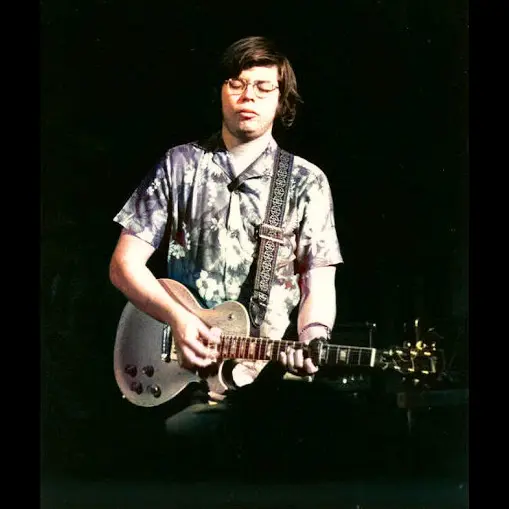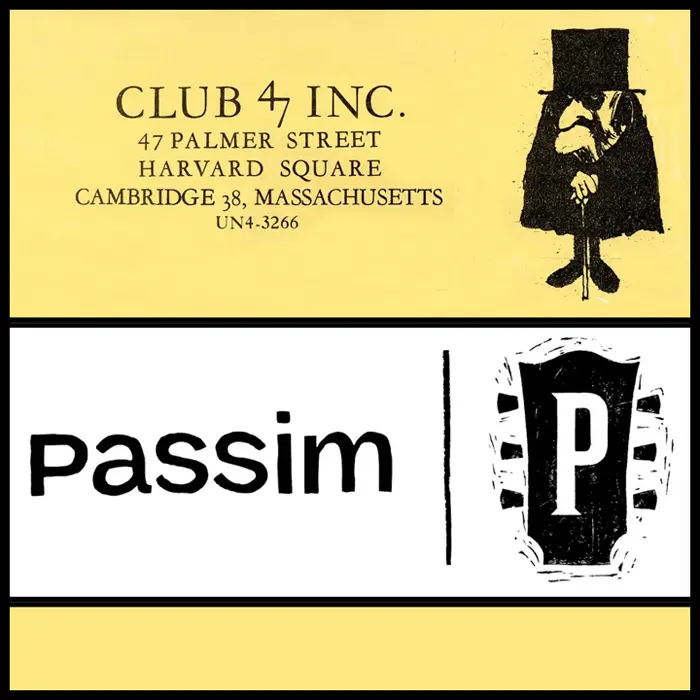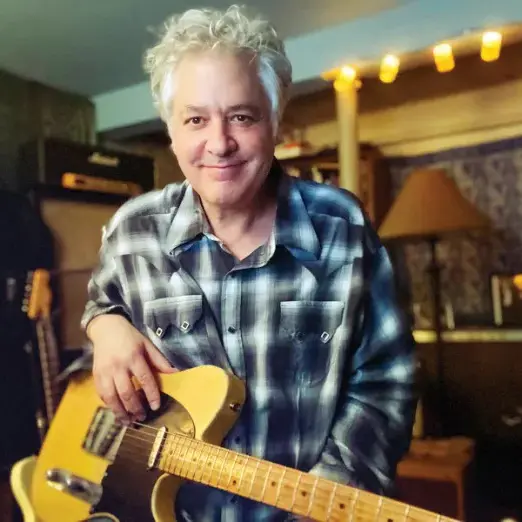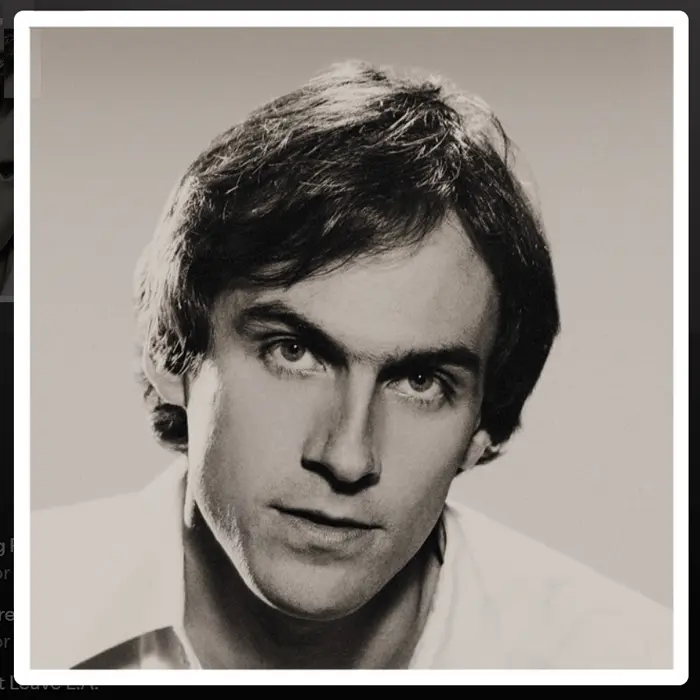James “Hutch” Hutchinson
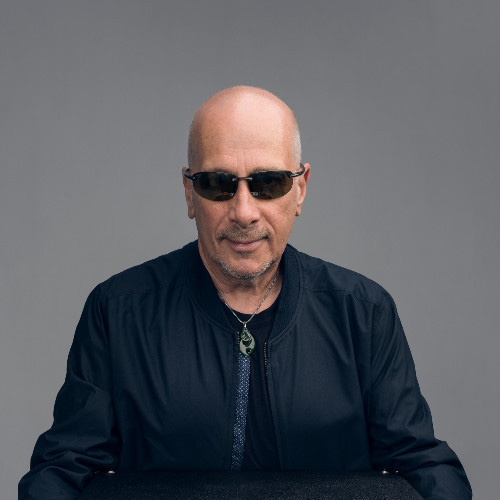
He’s been the bass-tone backbone of Bonnie Raitt’s band for four decades, which is head-turning enough considering the torrential outpouring of talent such a high-profile gig demands. But that’s just a drop in the bucket in terms of James “Hutch” Hutchinson’s total tally of four-stringed forays and the kaleidoscopic collection of influences that he’s combined to craft his singular sound.
And it’s his ability to draw from an extraordinarily eclectic range of traditions – from blues, jazz and country to bluegrass, rock and Latin – that makes Raitt’s genre-jumping gumbo of R&B, roots, rock, soul and New Orleans-style funk a perfect fit for Hutchinson. “Stylistically, she’s all across the board,” he told Bass Player in July 2012, when he appeared on the magazine’s cover. “We get to play every kind of groove under the sun.”
Overview, Influences
Like fellow Bostonian bassist Tony Levin, Hutchinson has run the stylistic gamut throughout his career, contributing his low-end licks to albums by jazz/blues diva Etta James, country icons Chet Atkins, Hank Williams, Jr. and Garth Brooks, rock giants Jerry Lee Lewis, Roy Orbison and Ringo Starr, pop luminaries Brian Wilson, Elton John and Neil Diamond, R&B greats Al Green and Pops Staples, folk-blues standard bearer Taj Mahal, boogie-woogie badass Dr. John, reggae royal Ziggy Marley and Irish-folk legends The Chieftains.
Unsurprisingly, he cites a wide-ranging assortment of bassists as his influences including Percy Heath (The Modern Jazz Quartet), Paul Chambers (Art Pepper, John Coltrane, Miles Davis), Chuck Rainy (Quincy Jones), Carl Radle (Bonnie & Delaney), Klaus Voormann (Manfred Mann), Rick Danko (The Band), George Porter, Jr. (The Meters), John Entwistle (The Who), Gordon Edwards (Stuff), Jack Casady (Jefferson Airplane), Muscle Shoals-based session cats David Hood and Tommy Cogbill and Carol Kaye of Los Angeles-based studio combo the Wrecking Crew.
Early Years
Born on January 24, 1953, in Lynn, Massachusetts, Hutchinson was raised from age three in Somerville, where his father was a firefighter and his mother was a computer engineer and programmer who worked on projects for IBM, MIT and NASA. Neither of them were musicians but his mother had sung in her high-school choir and loved jazz, especially Louis Armstrong, Thelonious Monk, Count Basie, Frank Sinatra, Duke Ellington and Huey “Piano” Smith, and some pop acts of the day like Buddy Holly. “We spent a lot of time at Symphony Hall,” Hutchinson says. He also spent a lot of time at Fenway Park watching the Red Sox and at Boston Garden watching the Bruins and Celtics; his grandfather held box seats at both venues.
Musical Training
At age seven, when most people began calling him “Hutch,” Hutchinson started guitar lessons at Butler Music in Somerville’s Davis Square. Another major part of his instrumental schooling was visiting his aunt, a world-traveling arts patron who had three pianos in her home in Somerville’s Ten Hills neighborhood. Hutchinson remembers playing piano there while she and her friends socialized over cocktails; among occasional guests were Arthur Fiedler, principal conductor of the Boston Pops Orchestra, and composer/conductor Leonard Bernstein, both of whom would coach Hutchinson as he practiced intervals and chords. His aunt arranged double-bass lessons for him with Jon Barwiki, principal bassist for the Boston Symphony Orchestra.
Early Performances, Focus on Electric Bass
In 1963, at age 10, Hutchinson started playing guitar and mandolin with banjoist Bob Mitchell on the Cambridge Common and he was in various bluegrass groups over the next few years in addition to the R&B/rock outfit Indescribably Delicious, which included guitarist John McDonald (later of The Sour Mash Boys). In 1965, after seeing Wilson Pickett perform at The Surf Nantasket Ballroom (with The Pilgrims as the opener), he began focusing primarily on electric bass.
Formative Experience
In the summer of 1965, 12-year old Hutchinson had a formative experience, one that might explain the reggae-twinged approach he takes even when playing rock and blues. “I went to the World’s Fair in New York City and I spent a lot of time in the Jamaica Pavilion,” he says. “I saw young Jimmy Cliff and Toots Hibbert in a revue backed by Byron Lee & the Dragonaires. On the same day [August 15], The Beatles were half a mile away at Shea Stadium. I could see the lights and hear the crowd. I knew what was going on and I wanted to be part of it. In a way, the world had given me The Beatles and Jamaican music at the exact same moment.”
First Recording Session
While a student at Somerville High School, Hutchinson’s favorite subjects outside of music were English and literature and he became “fascinated with aviation and science in a big way,” he says, even considering a career as a pilot. He studied part time at Berklee School of Music (now Berklee College of Music) and in 1968/69 played in psychedelic-rock group ETC, which won a WBCN-sponsored battle of the bands; one of the judges was Jeff “Skunk” Baxter and the prizes were a Baxter-produced session at Intermedia Sound Studios – “my first real session” Hutchinson says – and opening for Vanilla Fudge at The Commodore Ballroom in Lowell.
Move to San Francisco, Copperhead, Link Wray
In May 1970, four days after graduating from high school, 17-year-old Hutchinson moved to San Francisco. “I wanted to make records and there was no scene in Boston,” he says. “Also, the New York City scene was emigrating west and San Francisco had many genres, from Latin in the Mission to rock in the city and Marin and funk and soul in the East Bay, plus a burgeoning folk scene in North Beach.”
Shortly after arriving in the Bay Area, he started jamming with members of Moby Grape, The Doobie Brothers, Santana and The Mothers of Invention. Drummer David Weber – a Swampscott, Massachusetts, native with whom Hutchinson had jammed in Cambridge while in his early teens – introduced him to guitarist John Cipollina of Quicksilver Messenger Service and in 1972 he joined Cipollina’s new band, Copperhead. He appeared on their self-titled debut album in 1973 before joining rock-guitar pioneer Link Wray’s band in 1974.
Move to Guatemala, The Point, Move to Austin
In September 1974, Hutchinson went to Guatemala to record an album with the band Conjunto Santa Fe and he wound up staying in the country for over a year. During that time, he worked in studios across Central America and in late 1974 he and violinist Sid Page formed Latin jazz-fusion group The Point. After relocating to Austin, Texas, in November 1975, they became the de facto house band at a club called The Armadillo World Headquarters, opening for acts including Jeff Beck, Jan Hammer, Weather Report, Charlie Daniels and Willie Nelson. In 1976, The Point appeared at Nelson’s annual Fourth of July Picnic concert and in 1977 they won Jazz Group of the Year at the Austin Music Awards.
The Neville Brothers, Joining Bonnie Raitt, Don Was
In 1976, at a club in Austin, Hutchinson met members of The Meters, a funk four-piece that included keyboardist/vocalist Art Neville. In 1977, when Neville started assembling a new group with his siblings Charles, Cyril and Aaron – The Neville Brothers – he asked Hutchinson to join; he remained with the band for the next five years.
Hutchinson’s decades-long collaboration with Raitt began in May 1982 after The Rolling Stones’ studio/touring keyboardist Ian McLagan introduced the pair; he and Hutchinson had met in 1981, when The Neville Brothers were touring with the Stones. He joined Raitt’s band in 1983 and has been on all of her tours and LPs since then, starting with Nine Lives (1986) and Nick of Time (1989), the latter of which sold five million copies in the US alone, won three Grammy Awards (including Album of the Year) and soared to #1 in the Billboard 200. “Bonnie calls me her ‘music ranger’ because I bring in all these different influences,” he told Bass Player.
In the 1990s, Hutchinson recorded four albums with Raitt, each of which reached the upper end of the Billboard 200 – Luck of the Draw (1991, #2), Longing in their Hearts (1994, #1), Road Tested (1995, #44) and Fundamental (1998, #17) – and he joined producer Don Was’ studio crew with keyboardist Benmont Tench and drummer Jim Keltner, playing on hundreds of records for Was and other producers over the next 20-odd years. In the 2000s, he appeared on five more Raitt albums: Silver Lining (2002, #13), Souls Alike (2005, #19), Slipstream (2012, #6), Dig In Deep (2016, #11) and Just Like That (2022, #44).
Last Man Standing, Other Collaborations
In 2006, Hutchinson played on Jerry Lee Lewis’ album Last Man Standing, which featured a cavalry of household names including Jimmy Page, B.B. King, Little Richard, Buddy Guy, Mick Jagger, Bruce Springsteen, Robbie Robertson, Eric Clapton, Neil Young, John Fogerty, Merle Haggard, Kid Rock, Rod Stewart, George Jones, Willie Nelson, Toby Keith, Delaney Bramlett, Don Henley and Kris Kristofferson.
Other artists with whom he’s collaborated include Joe Cocker, Boz Scaggs, Eric Burdon, Mick Fleetwood, Jackson Browne, Linda Ronstadt, Patti LaBelle, Stevie Nicks, Michael McDonald, Crosby, Stills and Nash, Earl King, Lyle Lovett, Anne Murray, Bob Seger, Randy Newman, Alanis Morrissette, Bryan Adams, The B-52’s, Keb’ Mo’, Maria Muldaur, The Proclaimers, Kenny Aronoff, Bon Jovi’s Richie Sambora, Canned Heat‘s Walter Trout, The Allman Brothers’ Chuck Leavell and the Grateful Dead’s Bill Kreutzmann.
New England Appearances, Hokulele Studios
Among his laundry list of appearances in New England over the decades, on Saint Patrick’s Day 2010 Hutchinson appeared at Club Passim with the Hawaiian band Hapa and in 2015 and 2017 he played with Raitt at Fenway Park along with James Taylor. He’s also appeared in Boston with singer/songwriter Dennis Brennan and guitarist Duke Levine, both Massachusetts natives.
In 2020, Hutchinson founded Hokulele Studios on Maui and during the Covid-19 pandemic he worked from there with artists including singer/songwriters David Knopfler, Holly Lerski and Gary Nicholson, blues vocalist/pianist Marcia Ball, Duke Levine and guitarist/vocalist Patrick Simmons, co-founder of The Doobie Brothers. In 2021, he released the single and video “Mighty Big Sur” with Lerski and played bass on Knopfler’s LP Shooting For The Moon and Richard T. Bear’s Fresh Bear Tracks.
Stylistic Chameleon
Asked how he’s become such a stylistic chameleon, Hutchinson said he tries to embrace and blend all types of music in a personalized way. ”I think my gift is to hear things the way I hear them,” he explained. “James Booker, the great New Orleans piano player, once said, ‘We’re the culmination of all our influences,’ and that’s what it is. What you bring to the table is what you retain in your head, your ears, your mind and your heart, which hopefully you can express in the moment.
Keeping It Local
Asked how new digital technologies have affected music, Hutchinson pointed out the unwavering importance of keeping things local and performing live. “People need to realize that music still comes down to a local level,” he said. “The Internet gives artists opportunities to be recognized across borders but it’s the local level that really makes or breaks an artist. Playing for people is what makes you a better musician and a better performer. That’s when you have to assert yourself and say, ‘Look, this is what I do. This is who I am.’”
“It’s that interaction with a live audience that helps you,” he added. “That’s where you get that immediate feedback. You don’t get that on the Internet, even though social-media feedback is more immediate now than it used to be. The stage is still your proving ground.”
(by D.S. Monahan)

